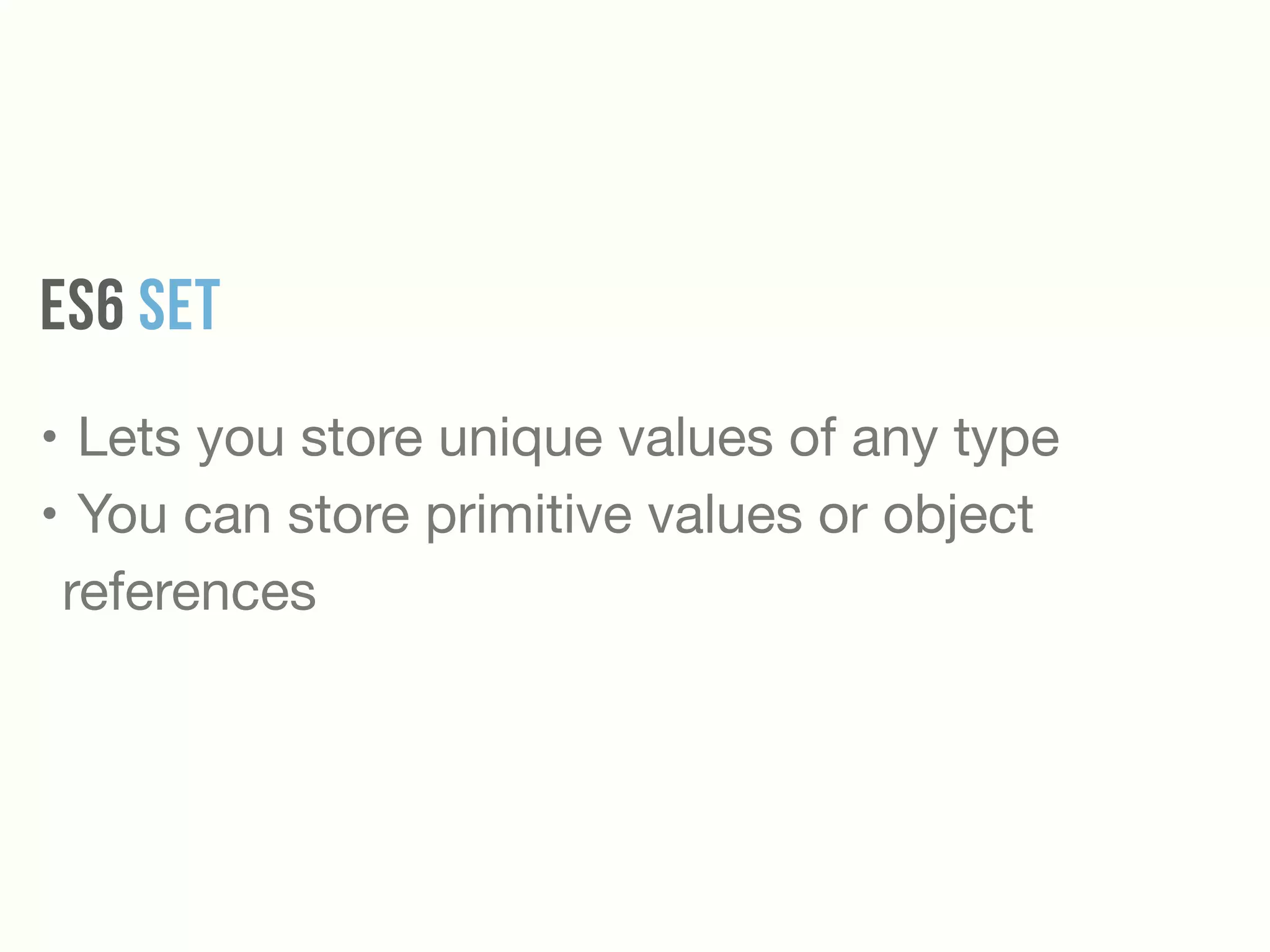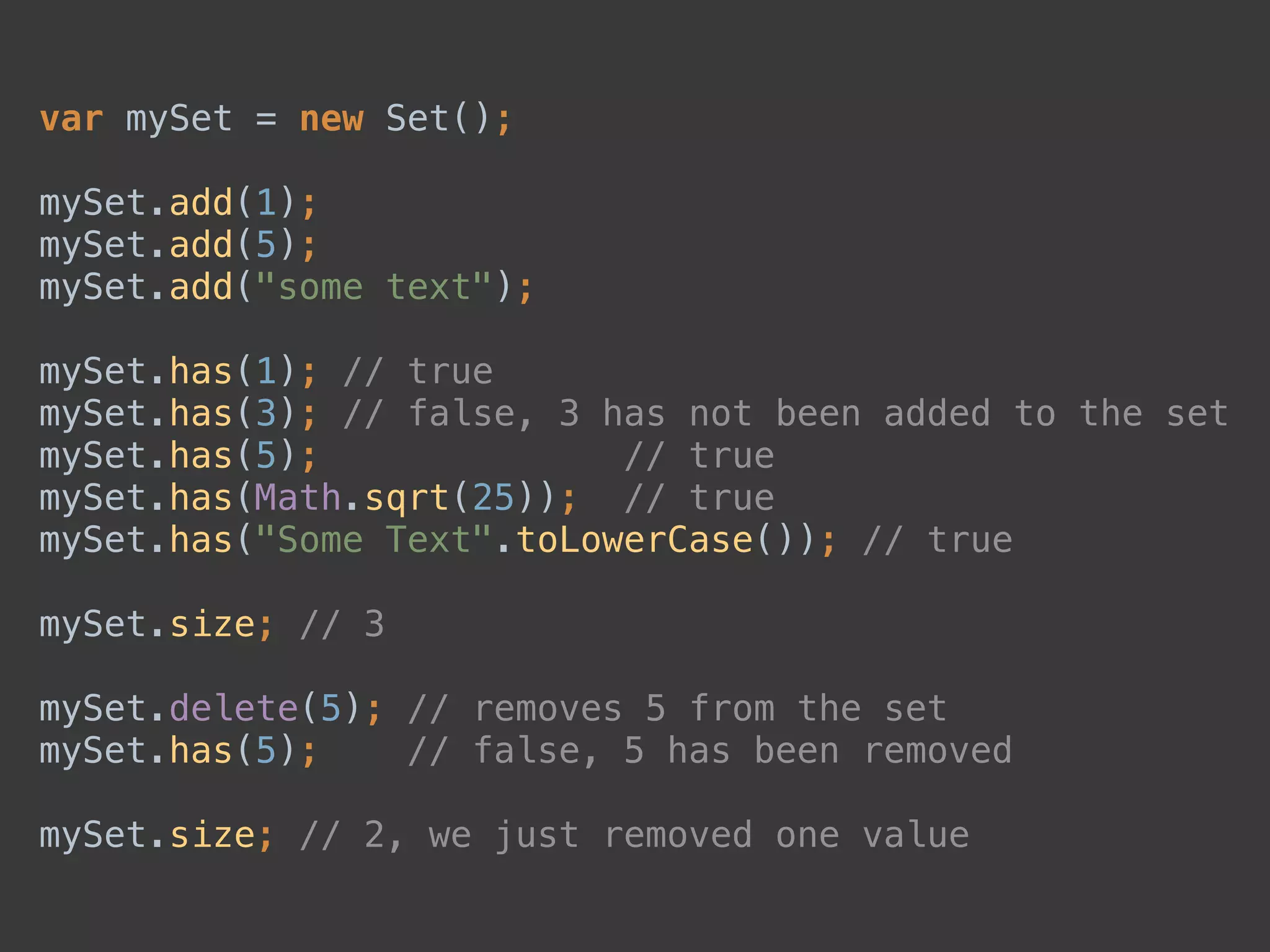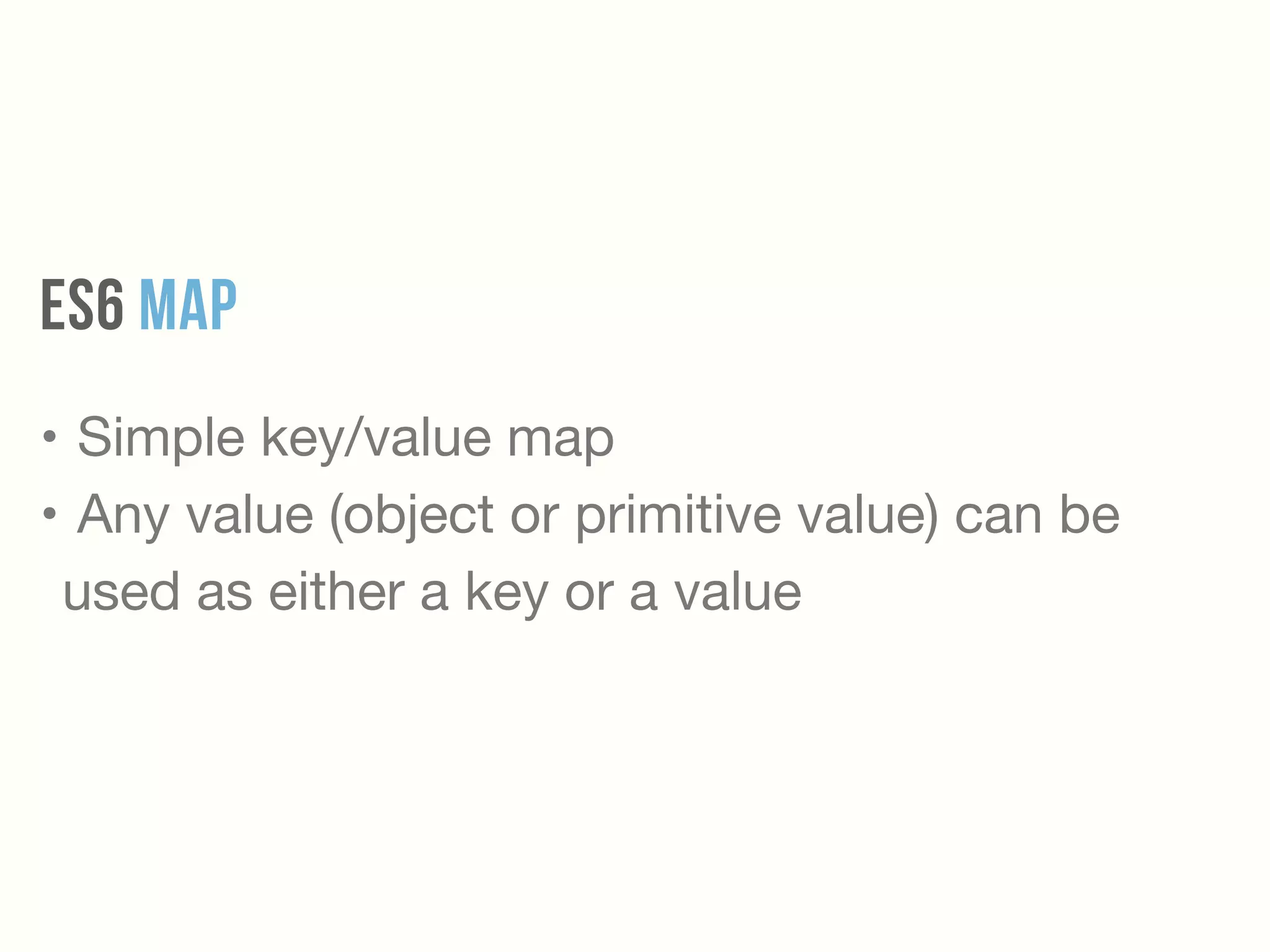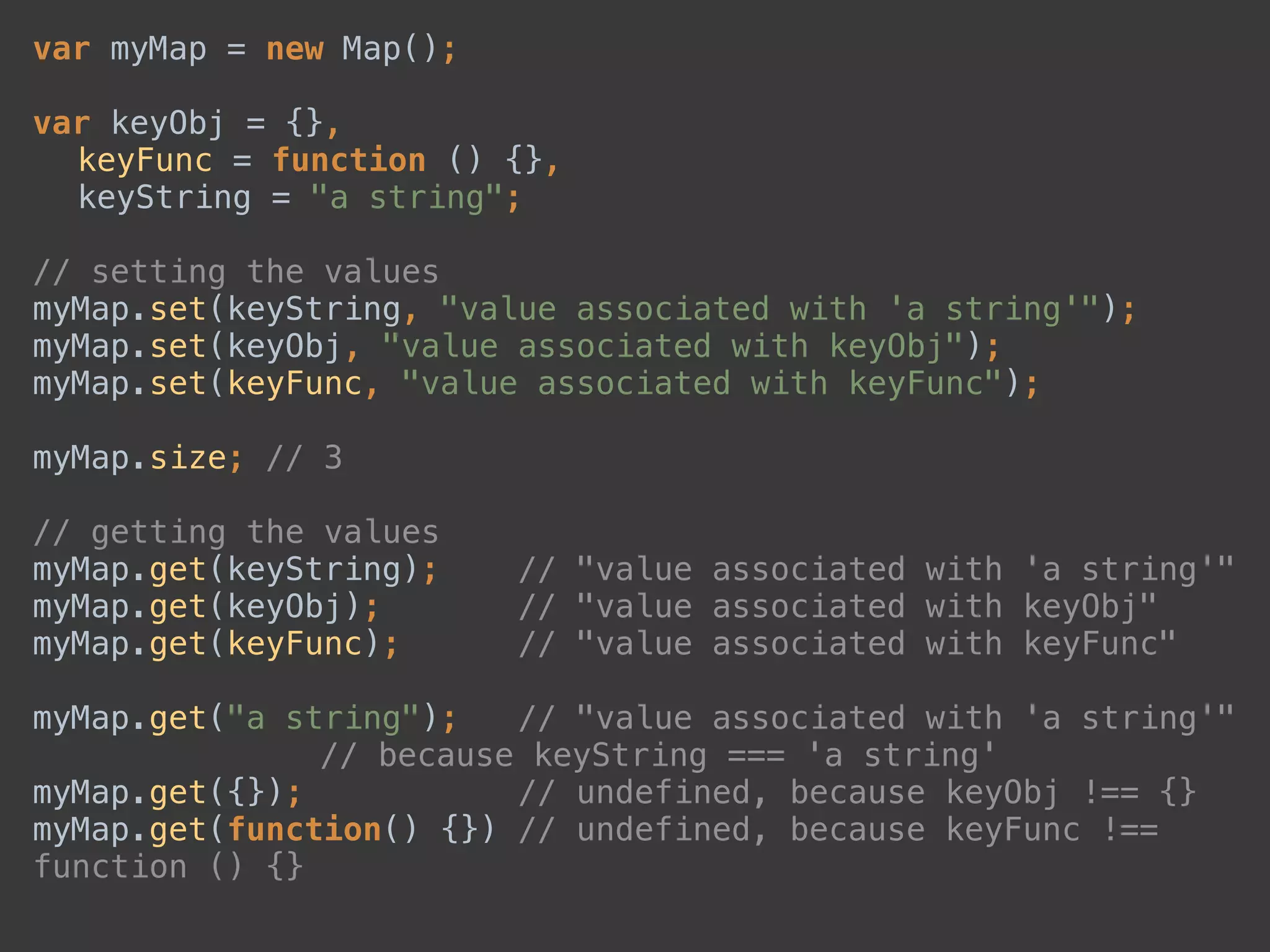The document provides an overview of ECMAScript 2015 (ES6), highlighting its new features such as syntax for classes, inheritance, modules, arrow functions, template strings, and object literals. It discusses the benefits of these features, including improved readability and functionality in JavaScript programming. Additionally, it includes examples demonstrating how to implement these features and mentions resources for further exploration of ES6.

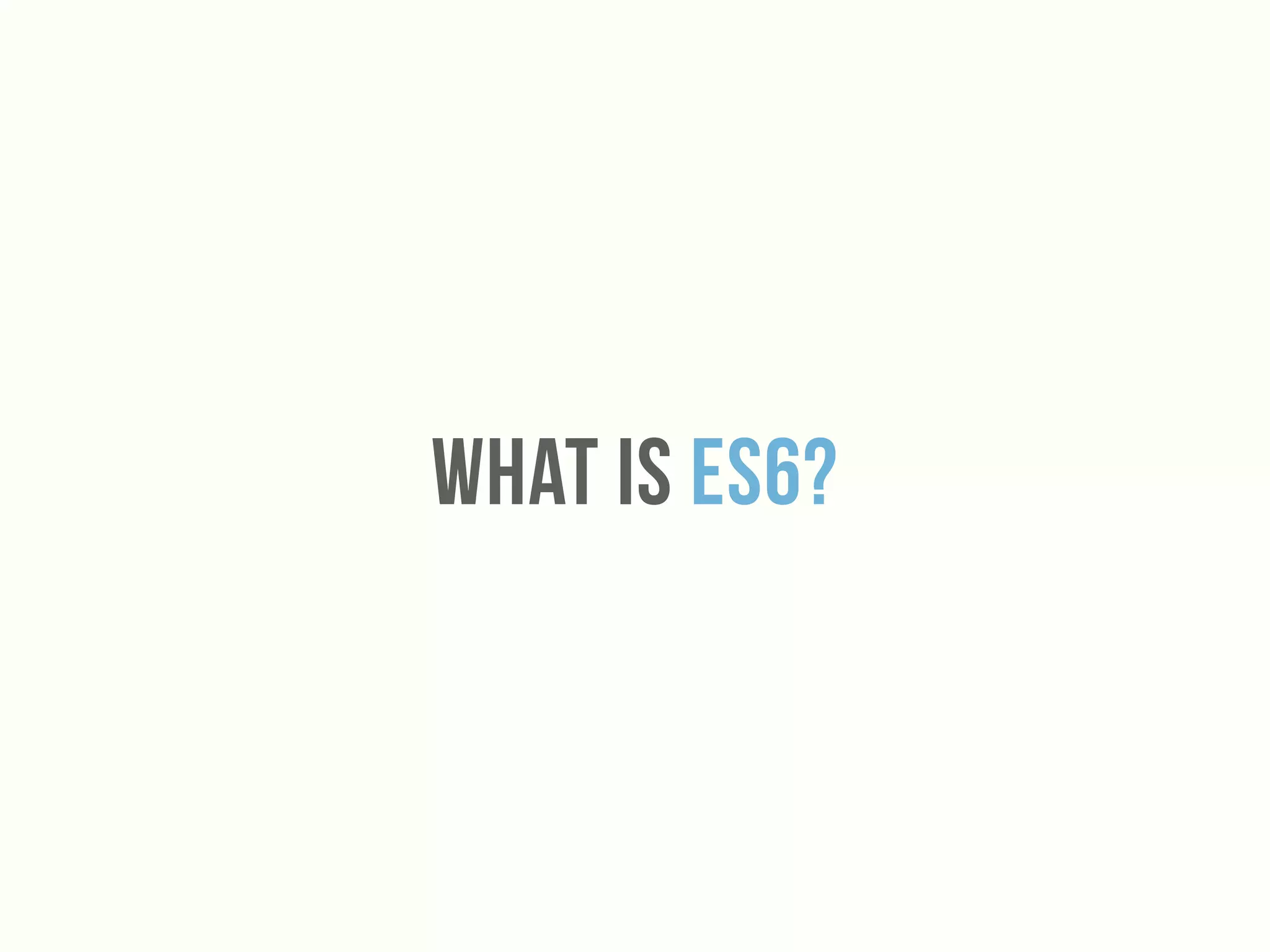



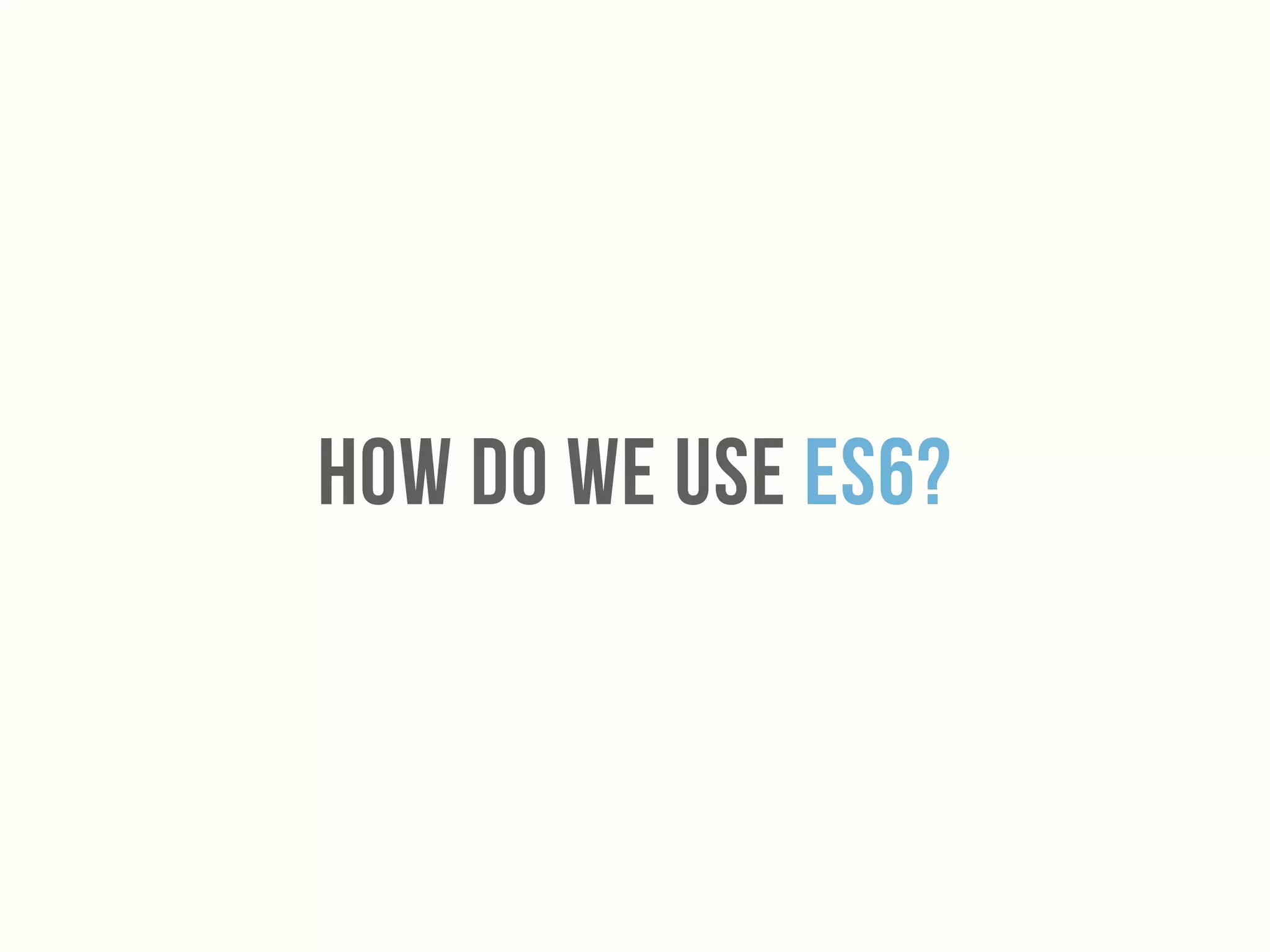
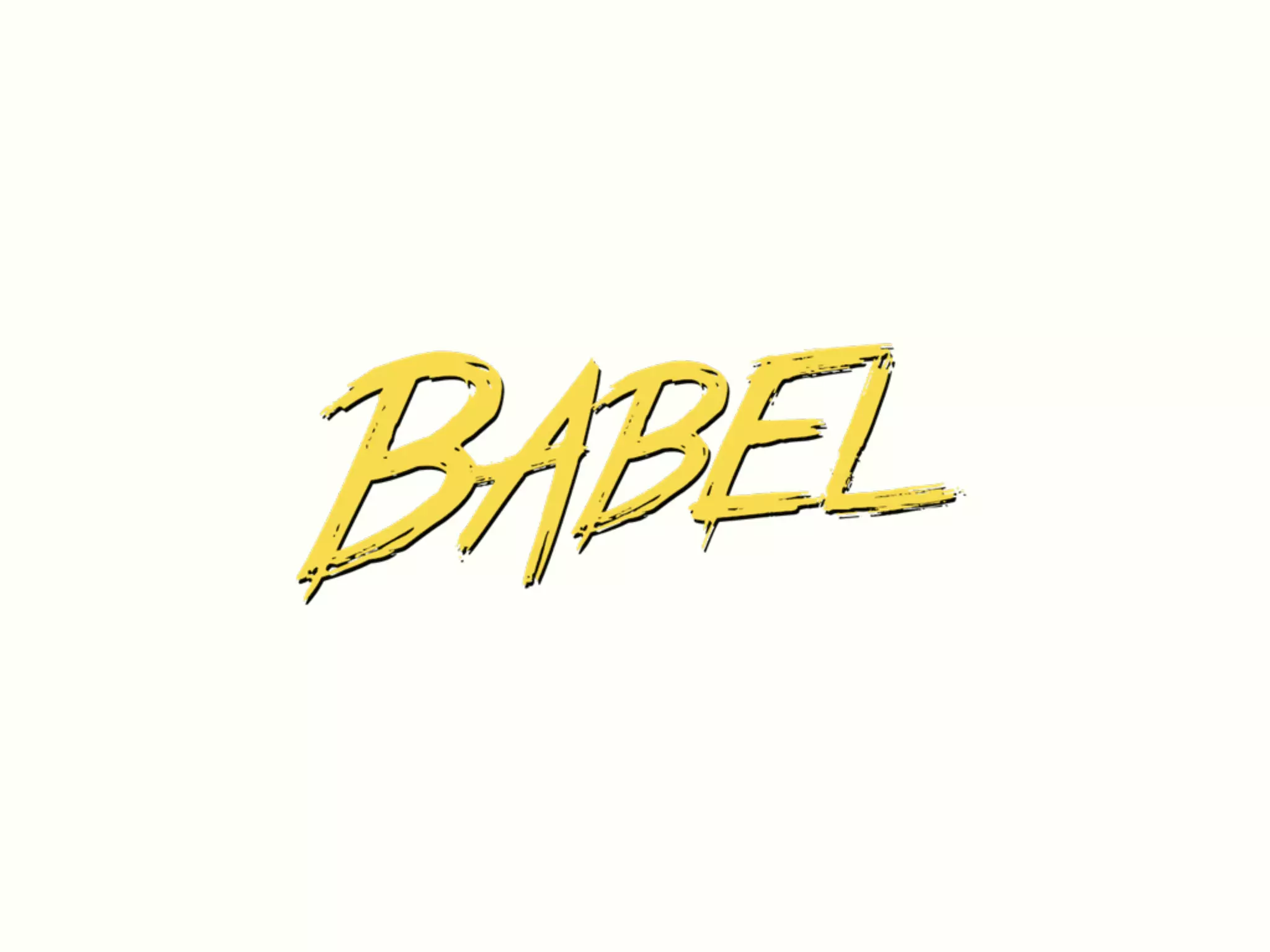
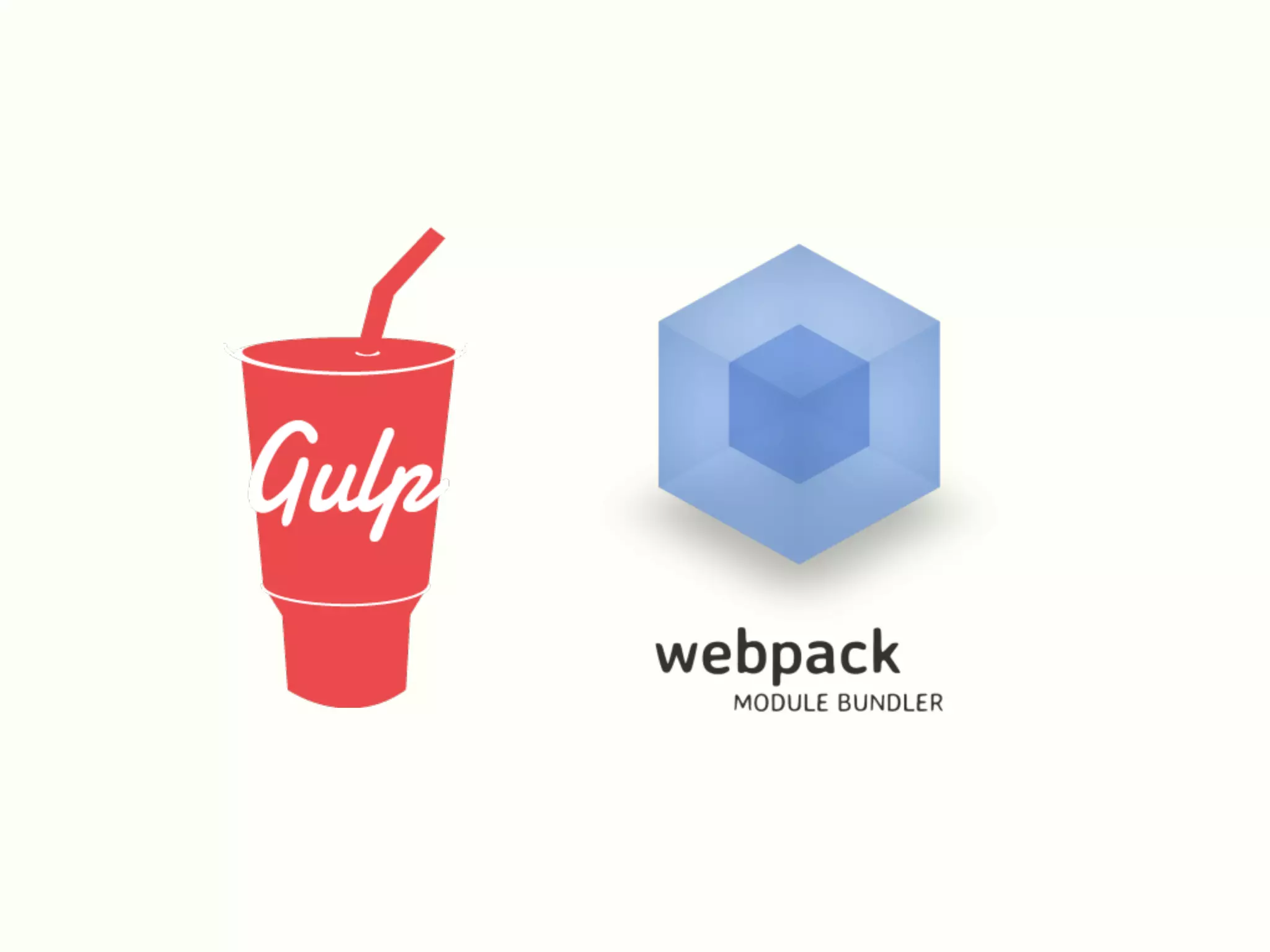






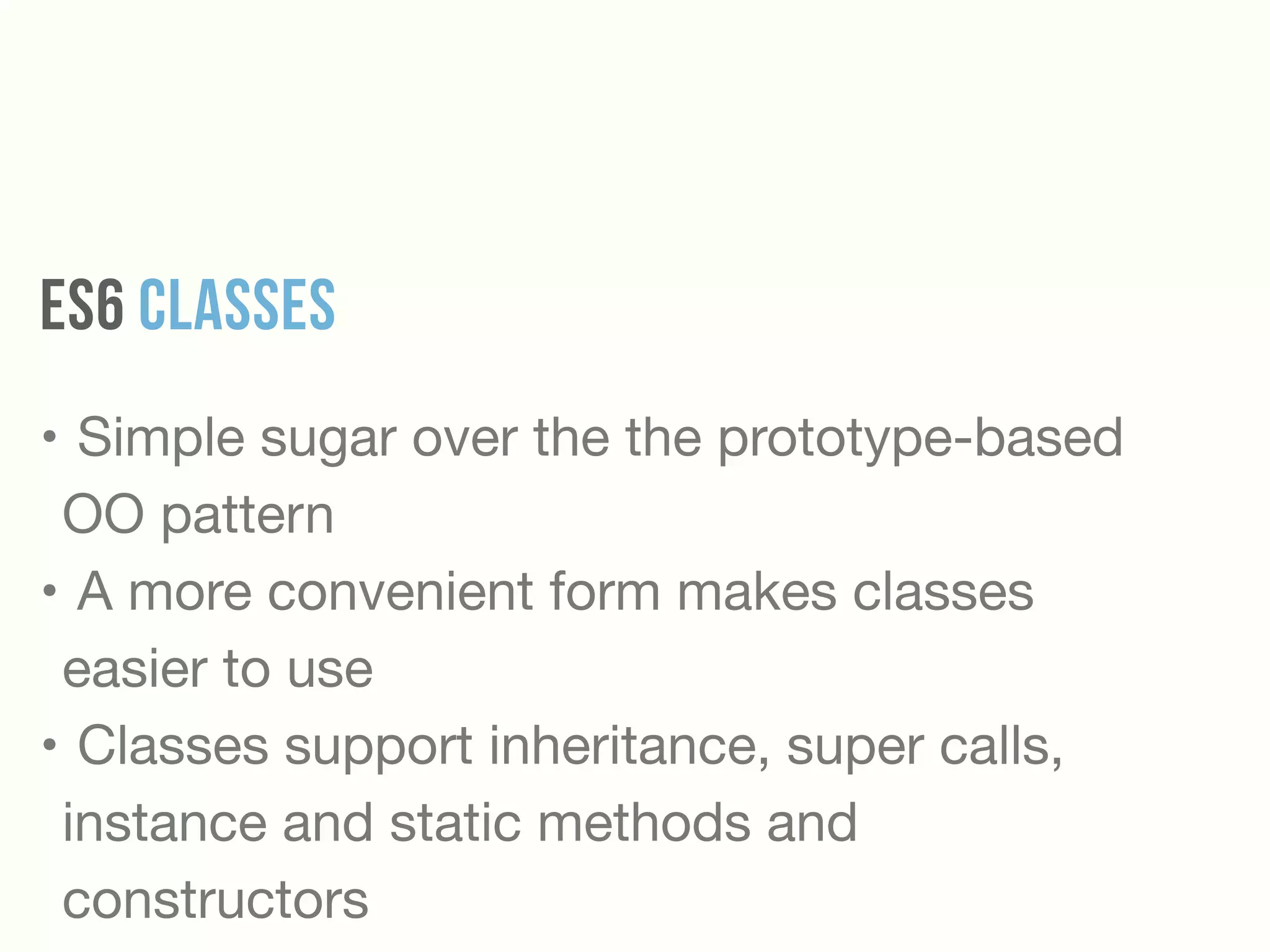
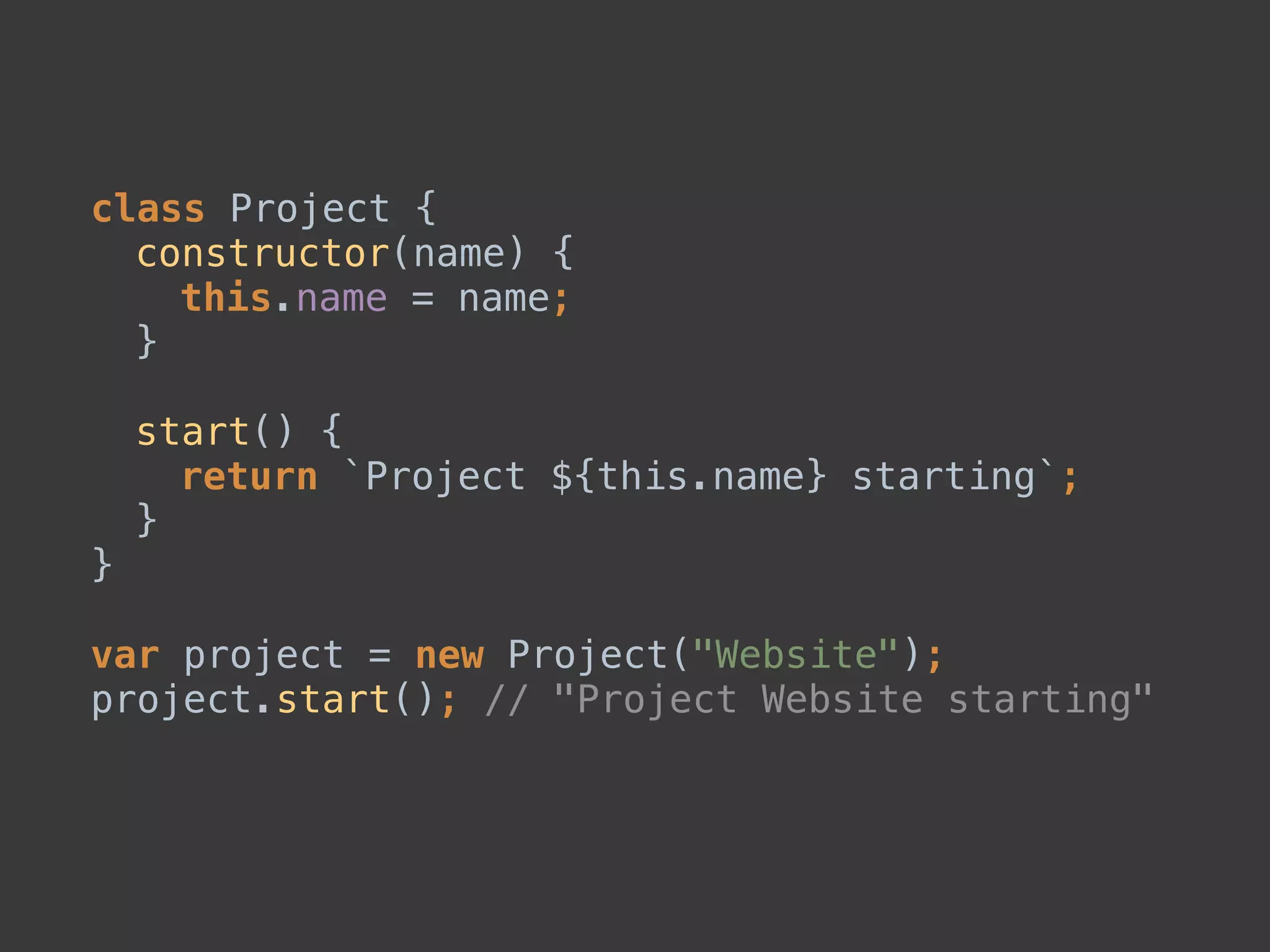
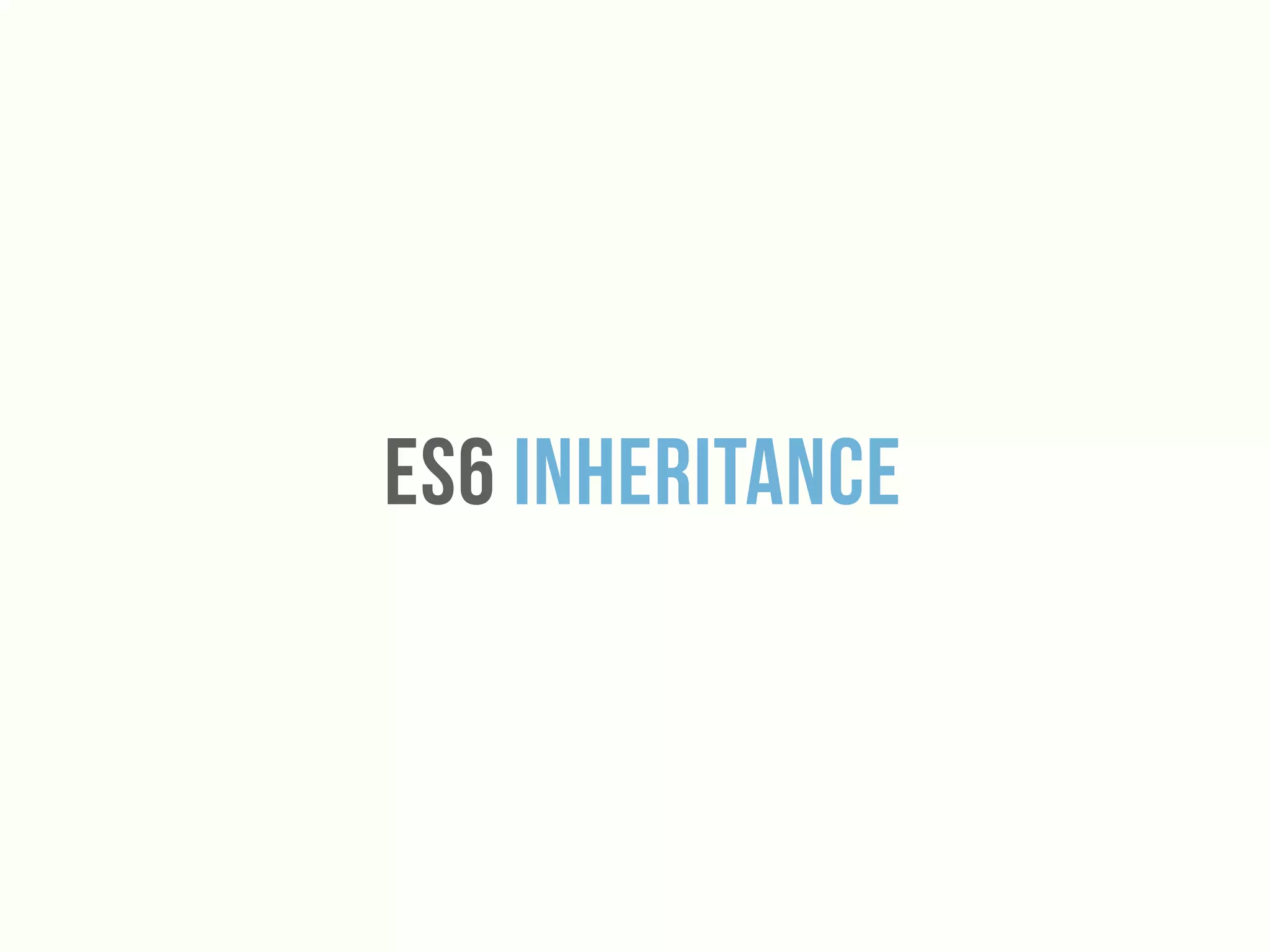
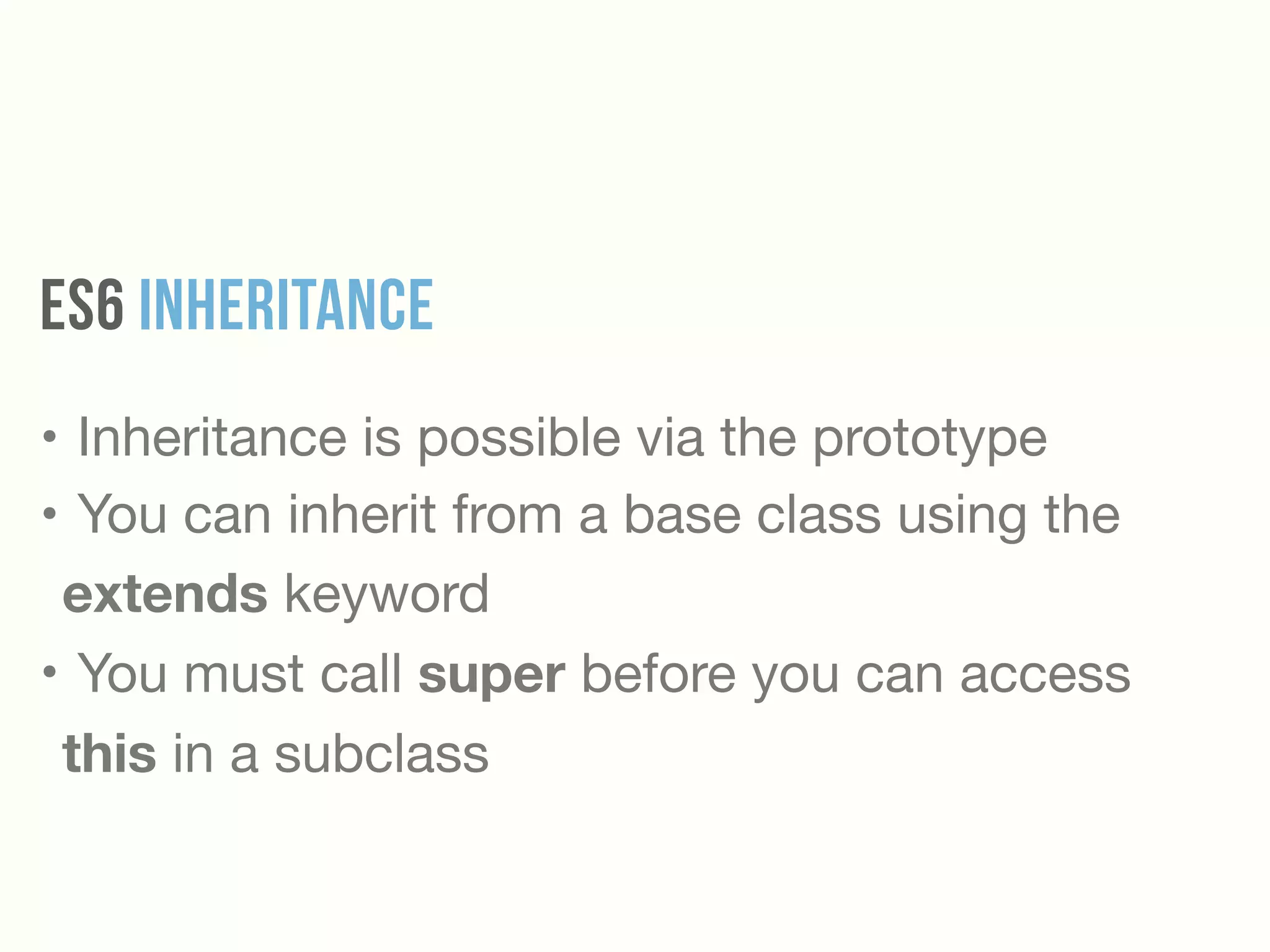
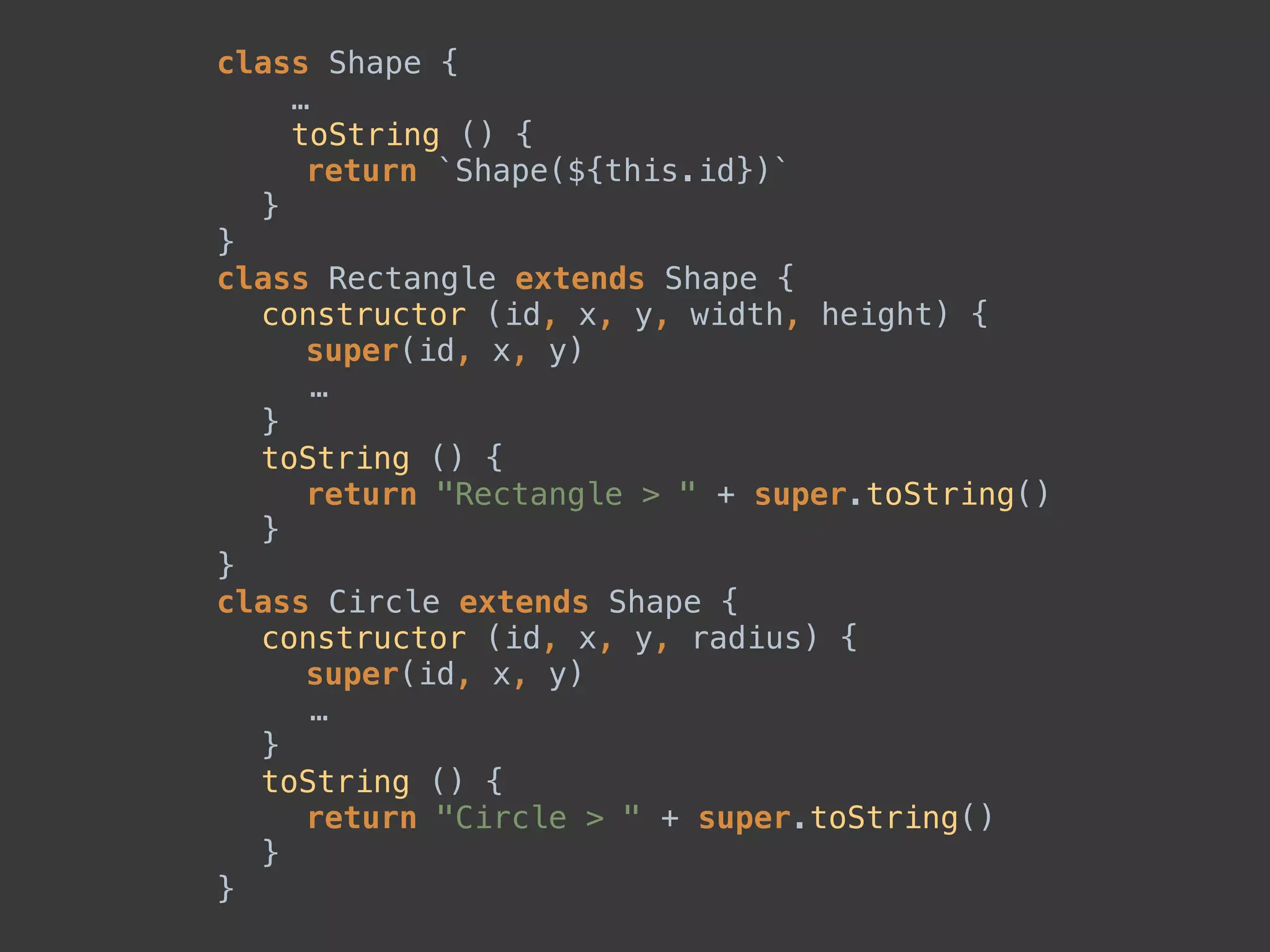
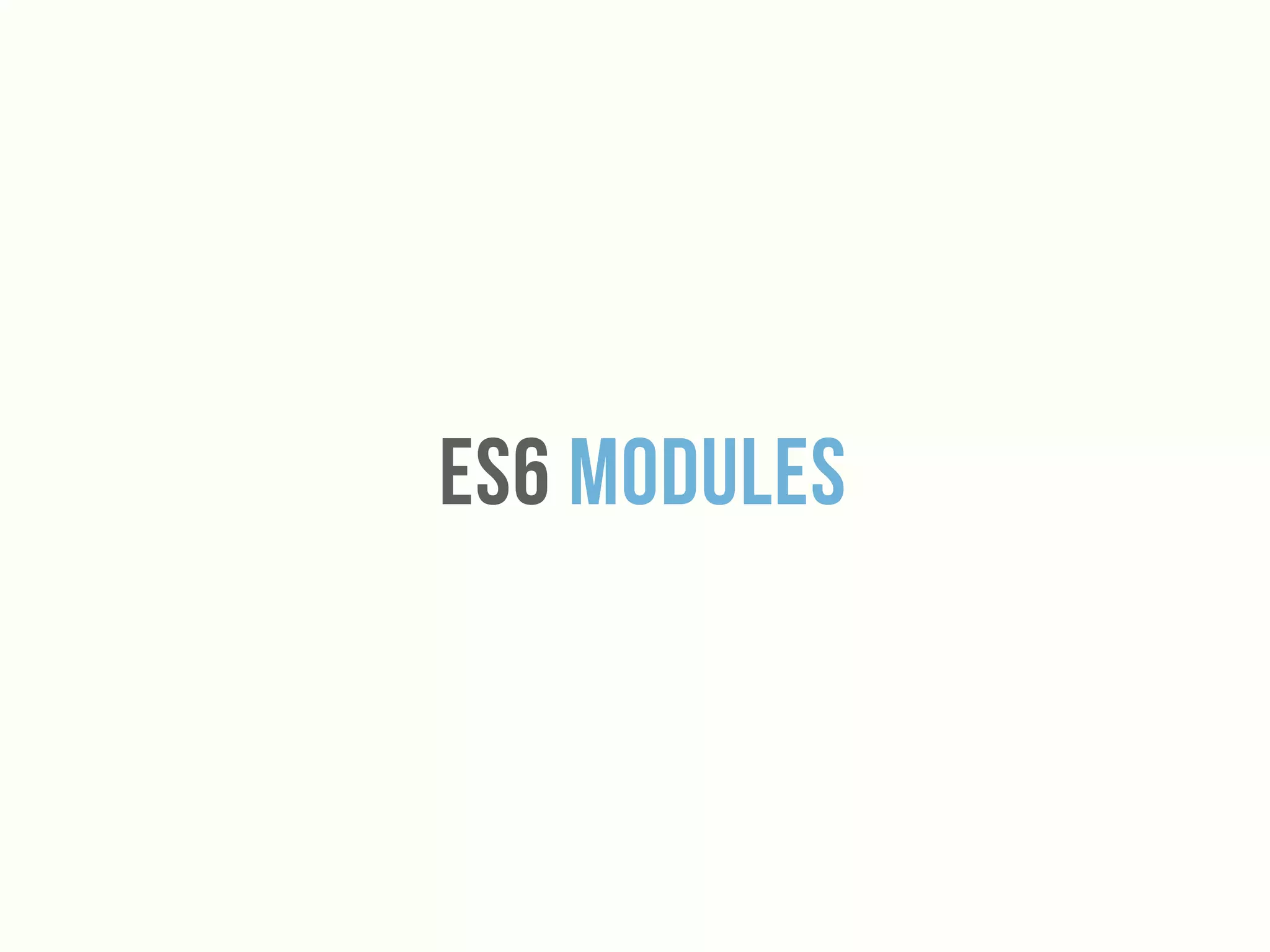
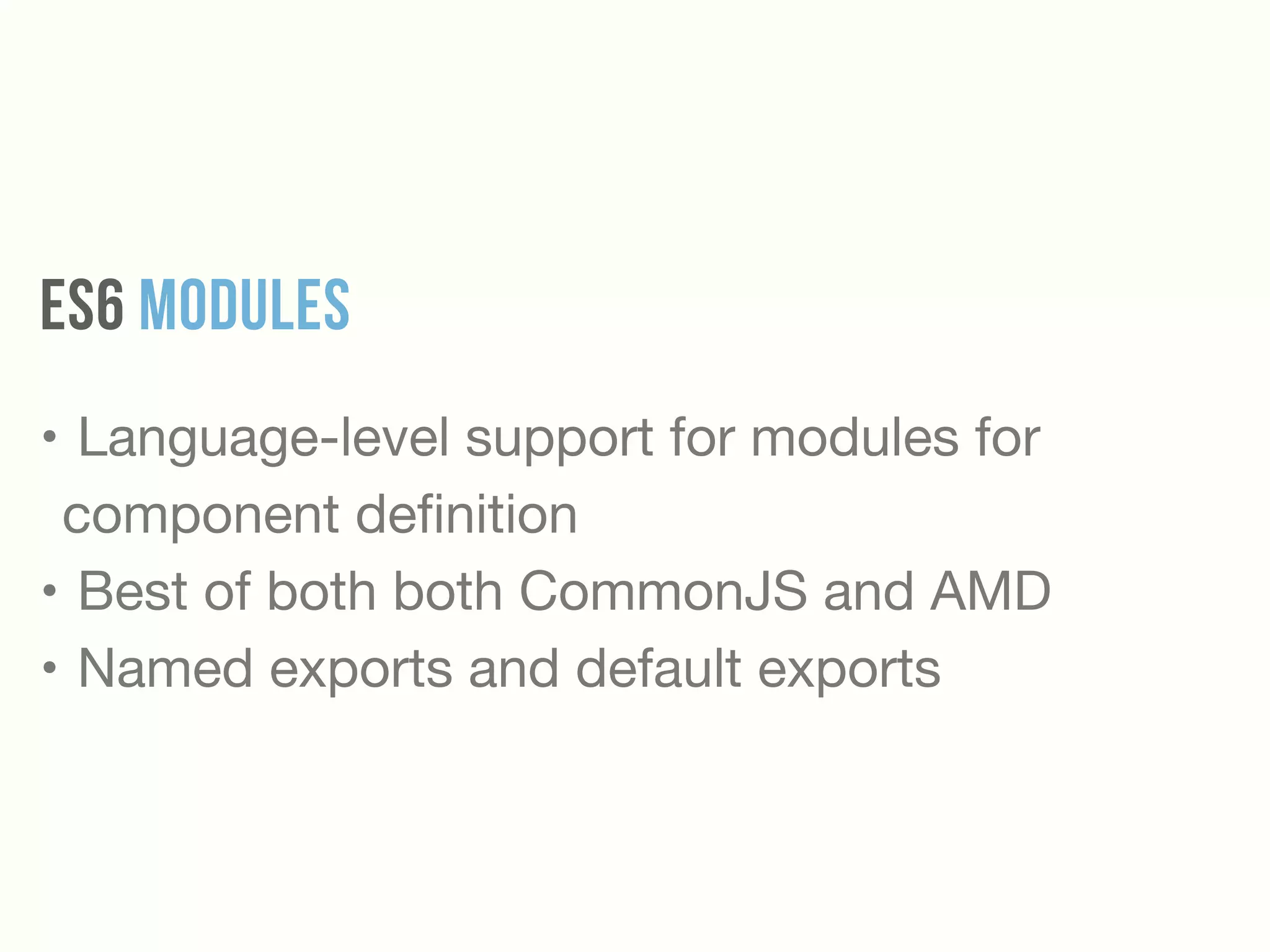
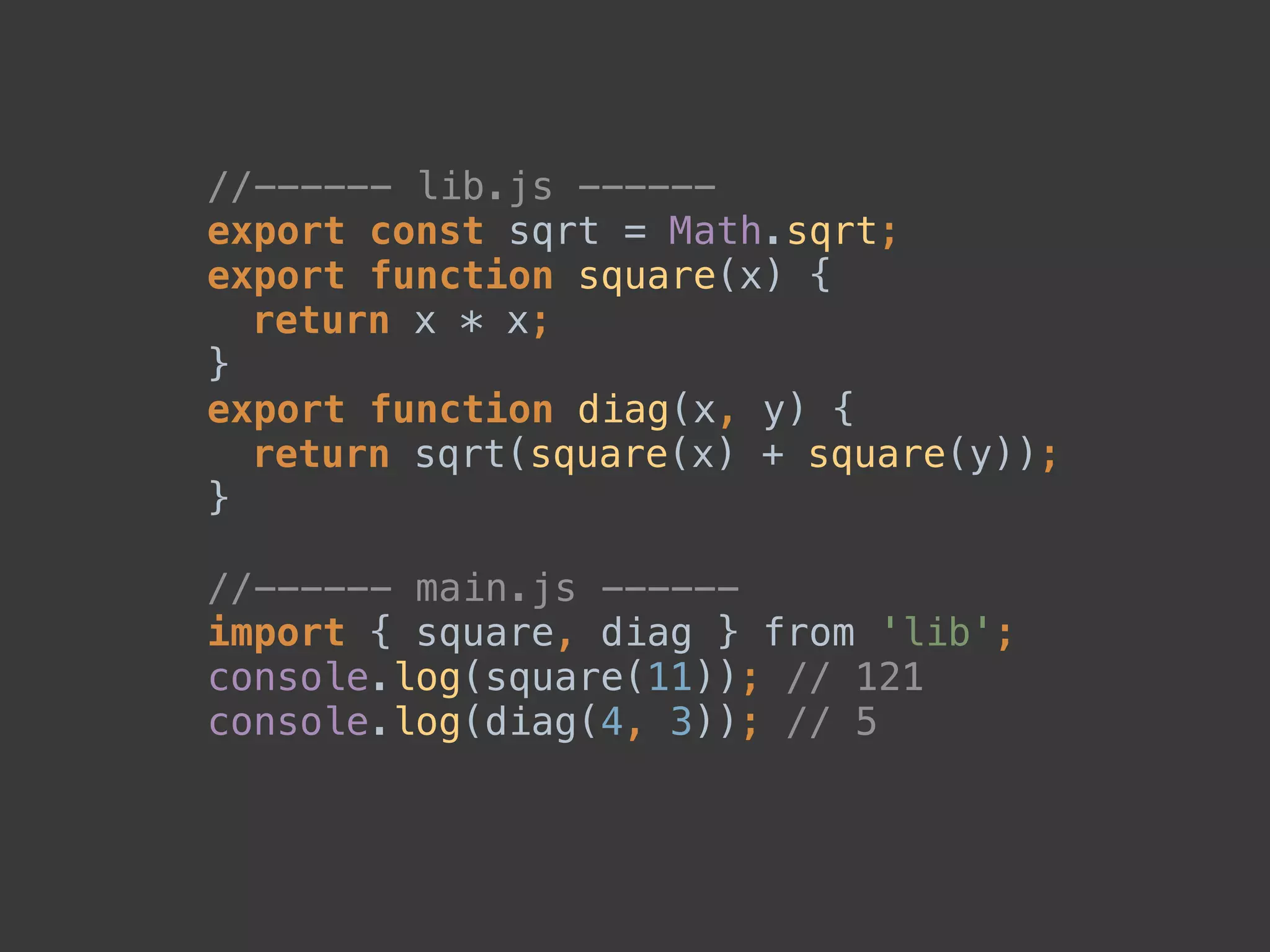

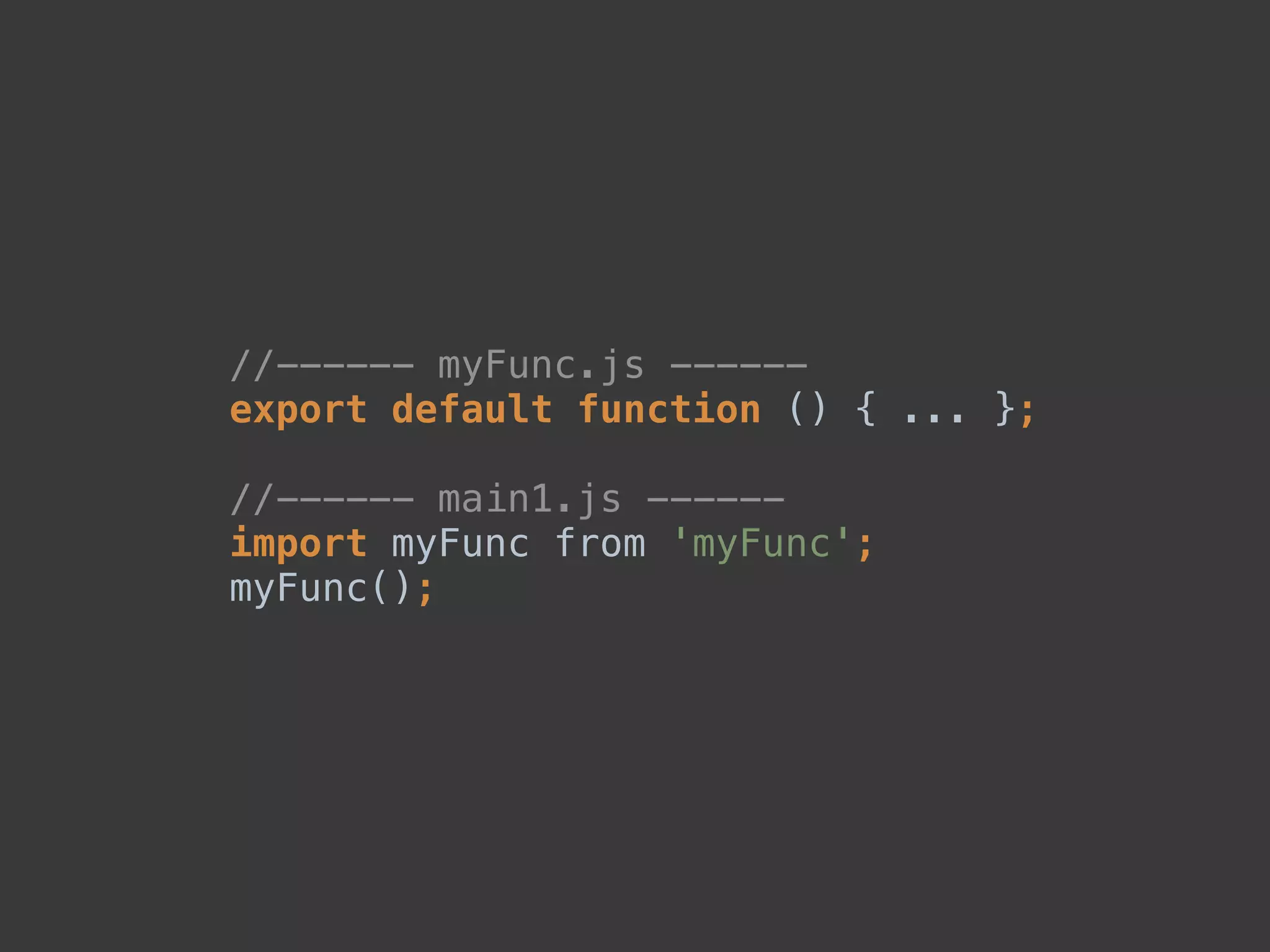
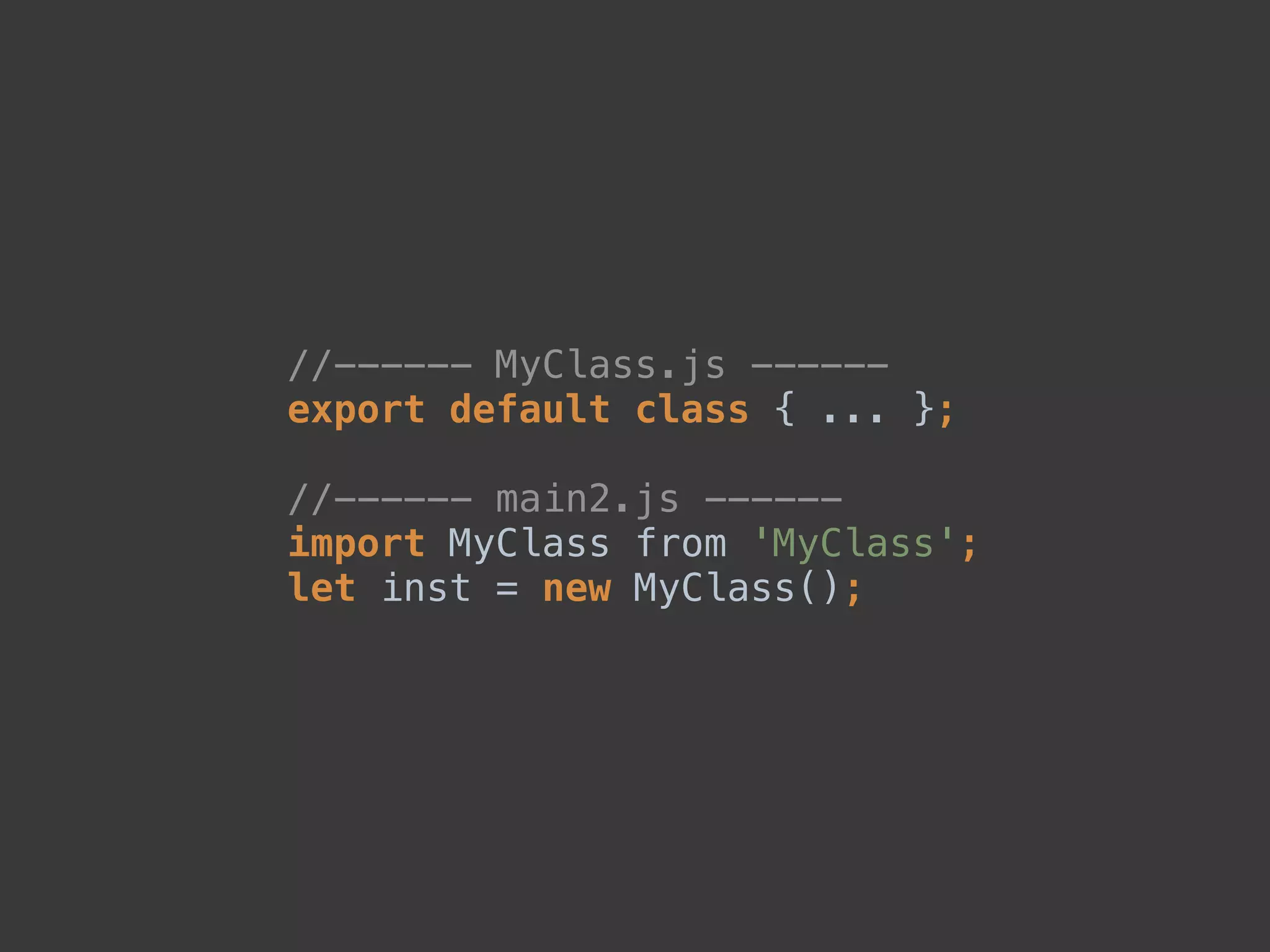


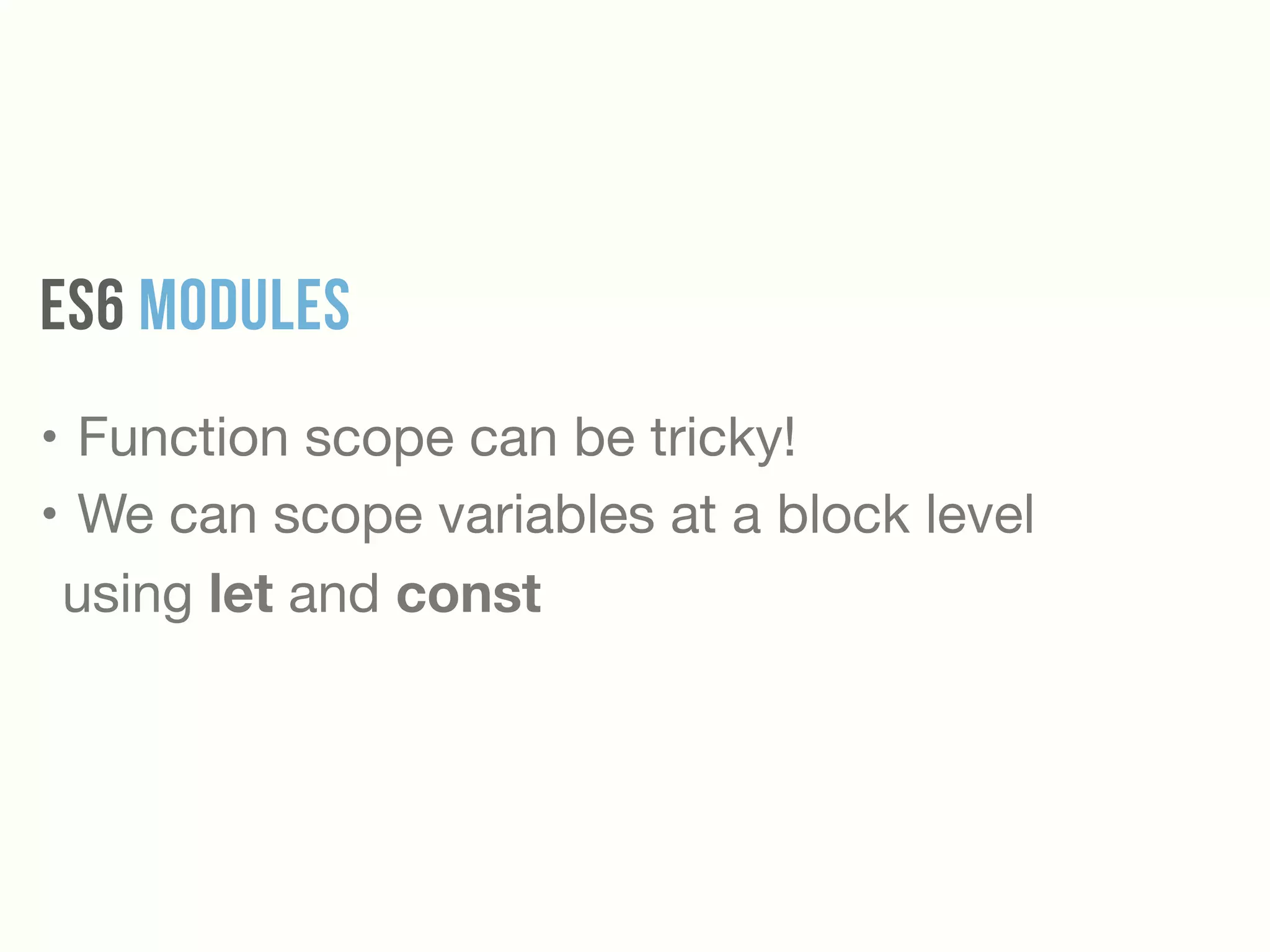
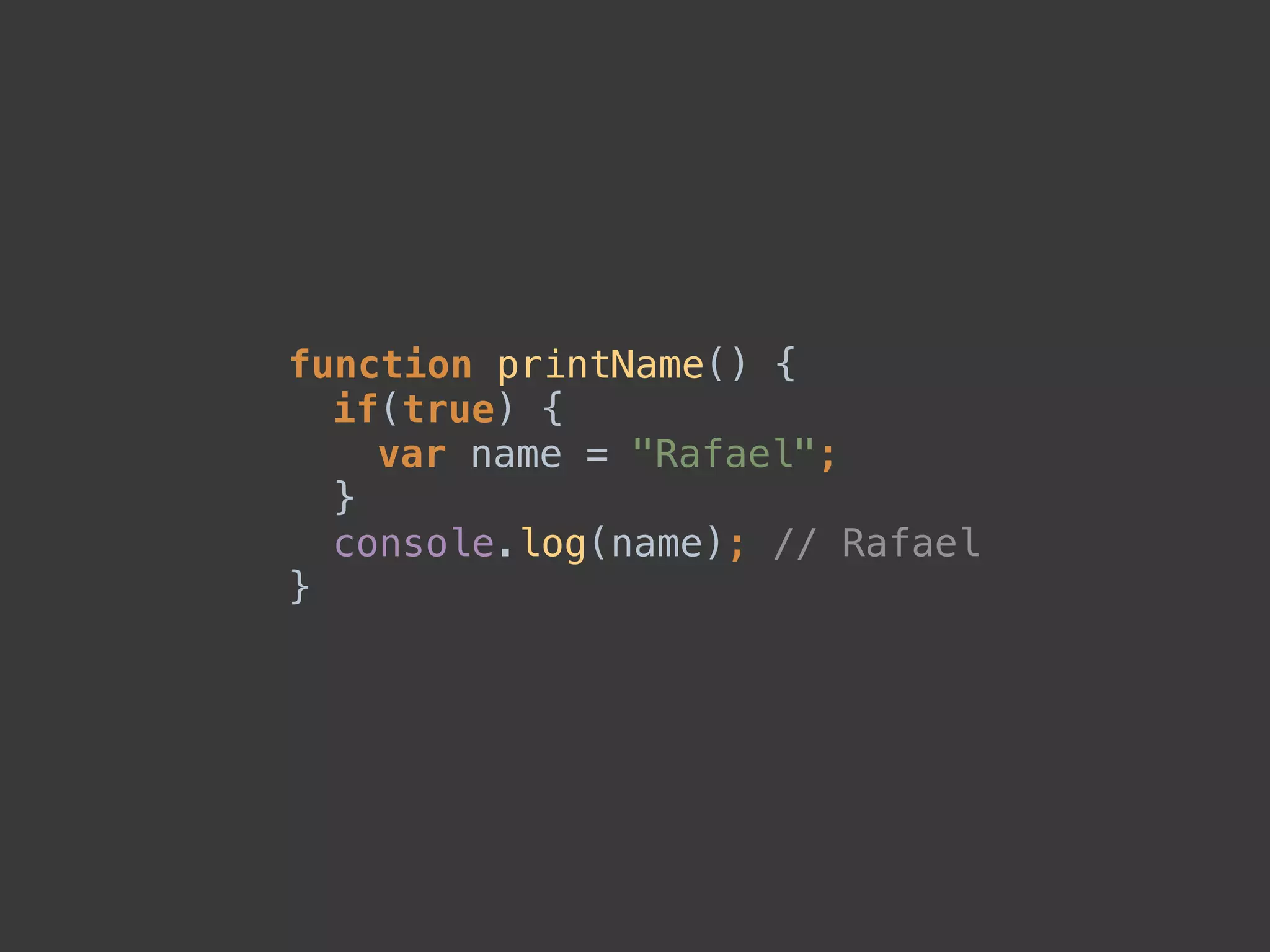
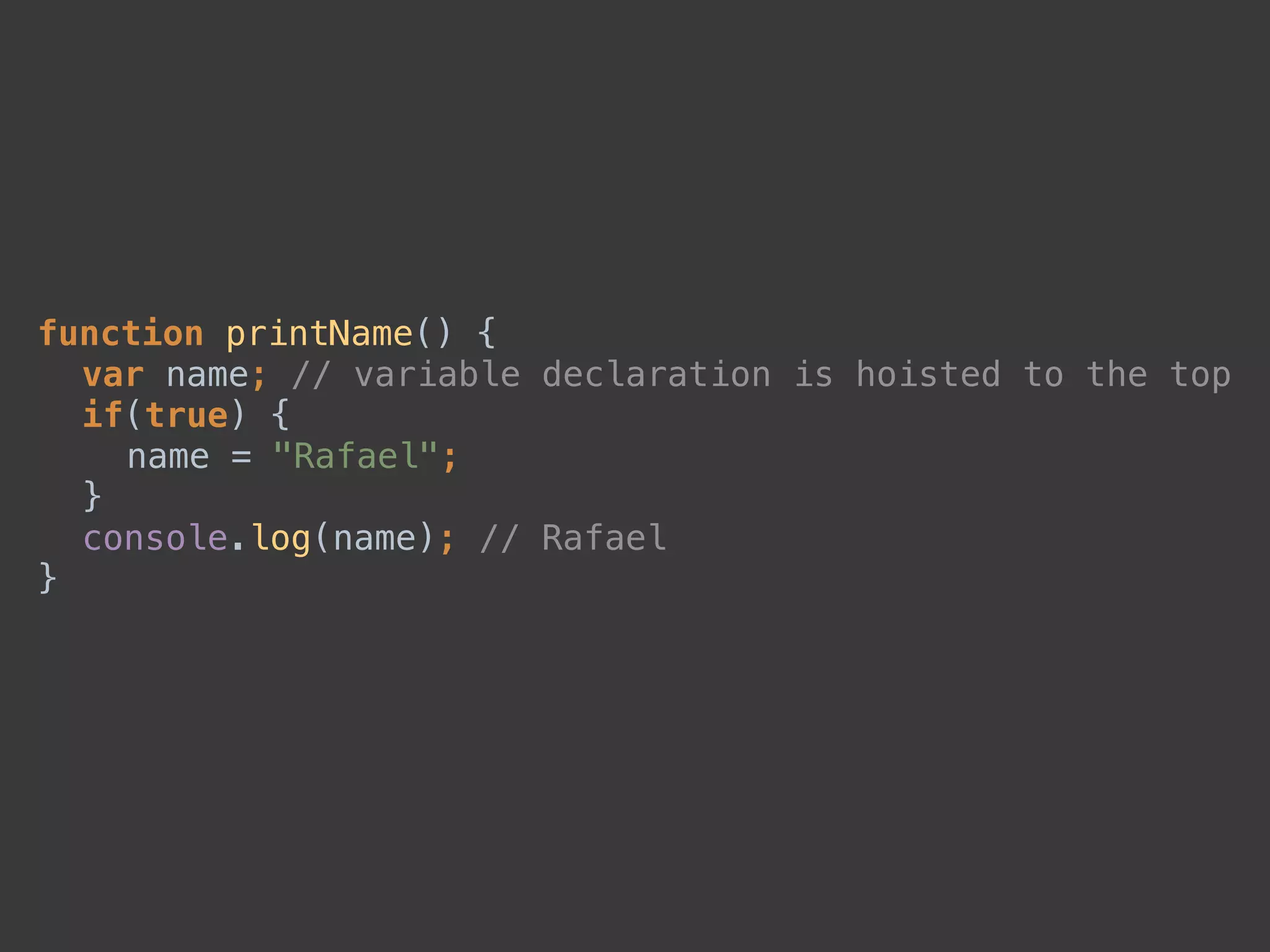
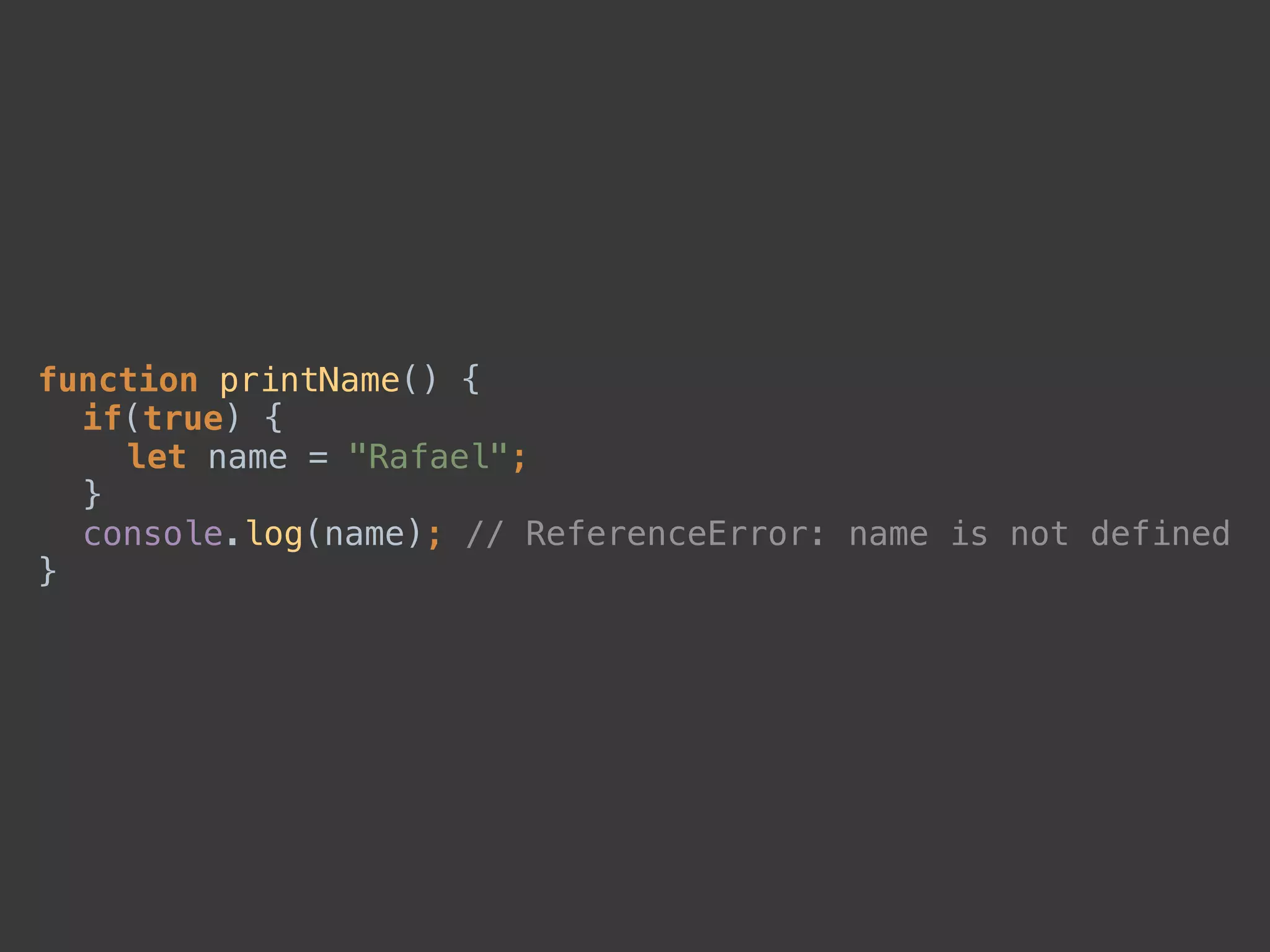
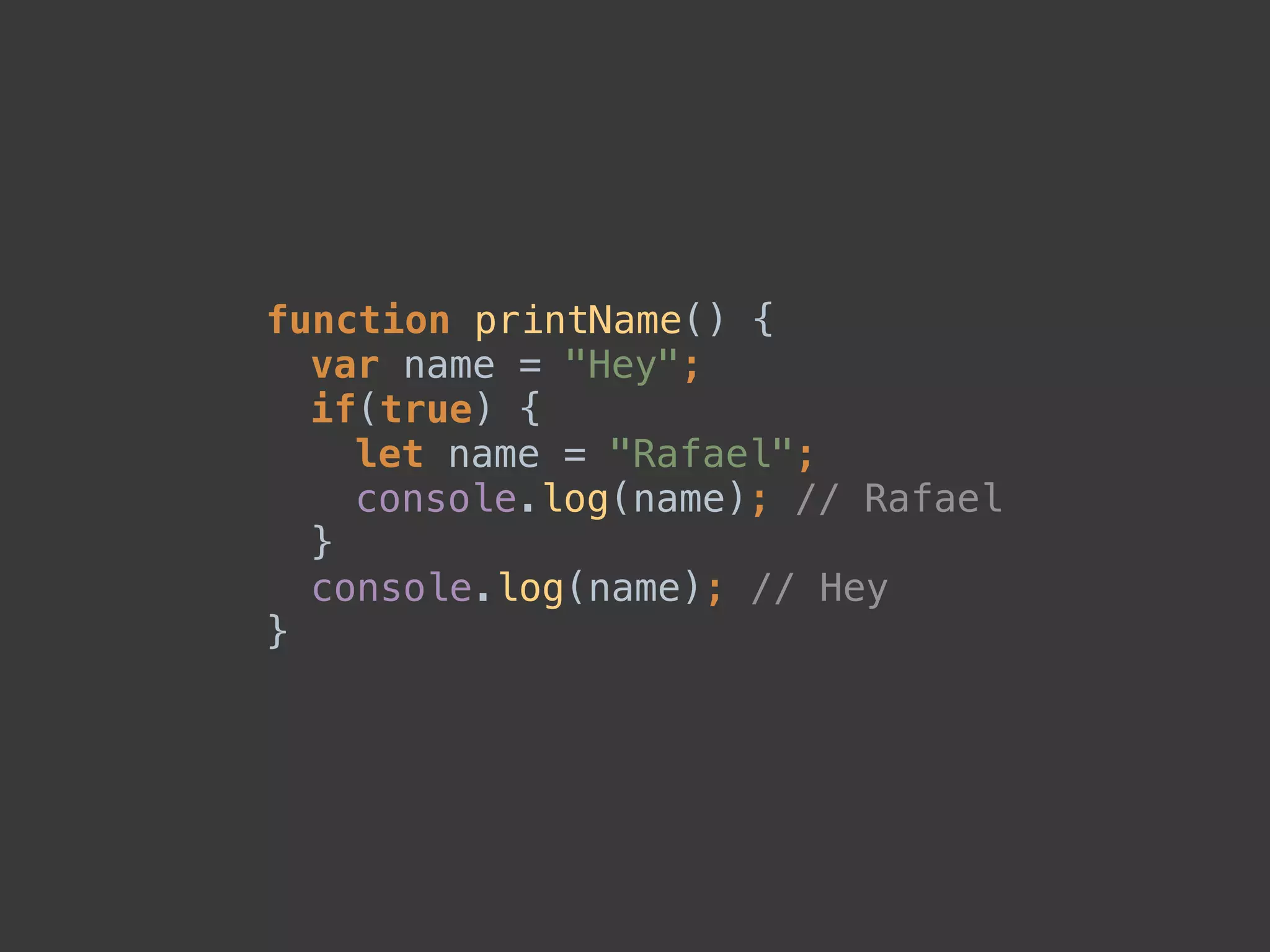

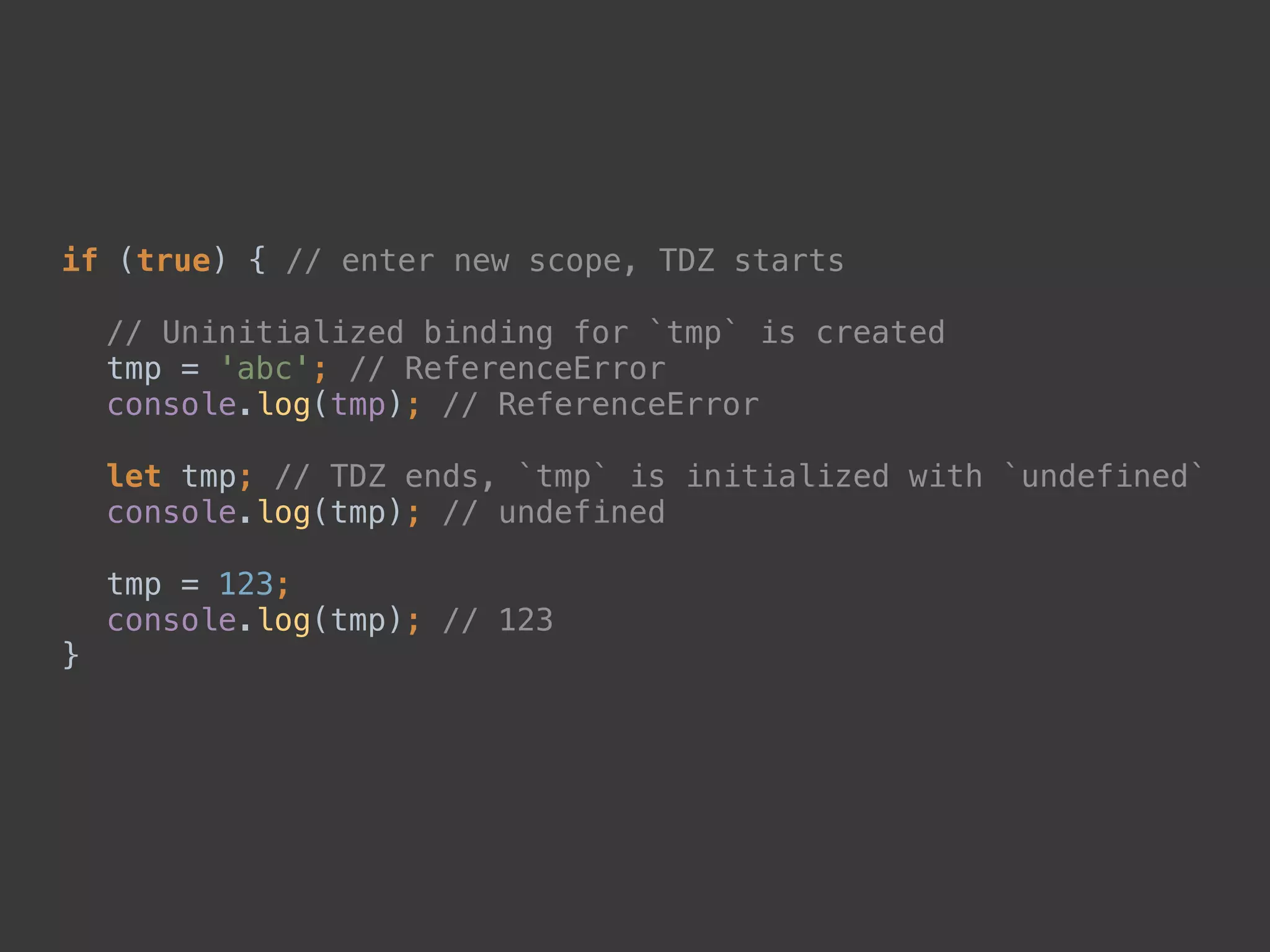
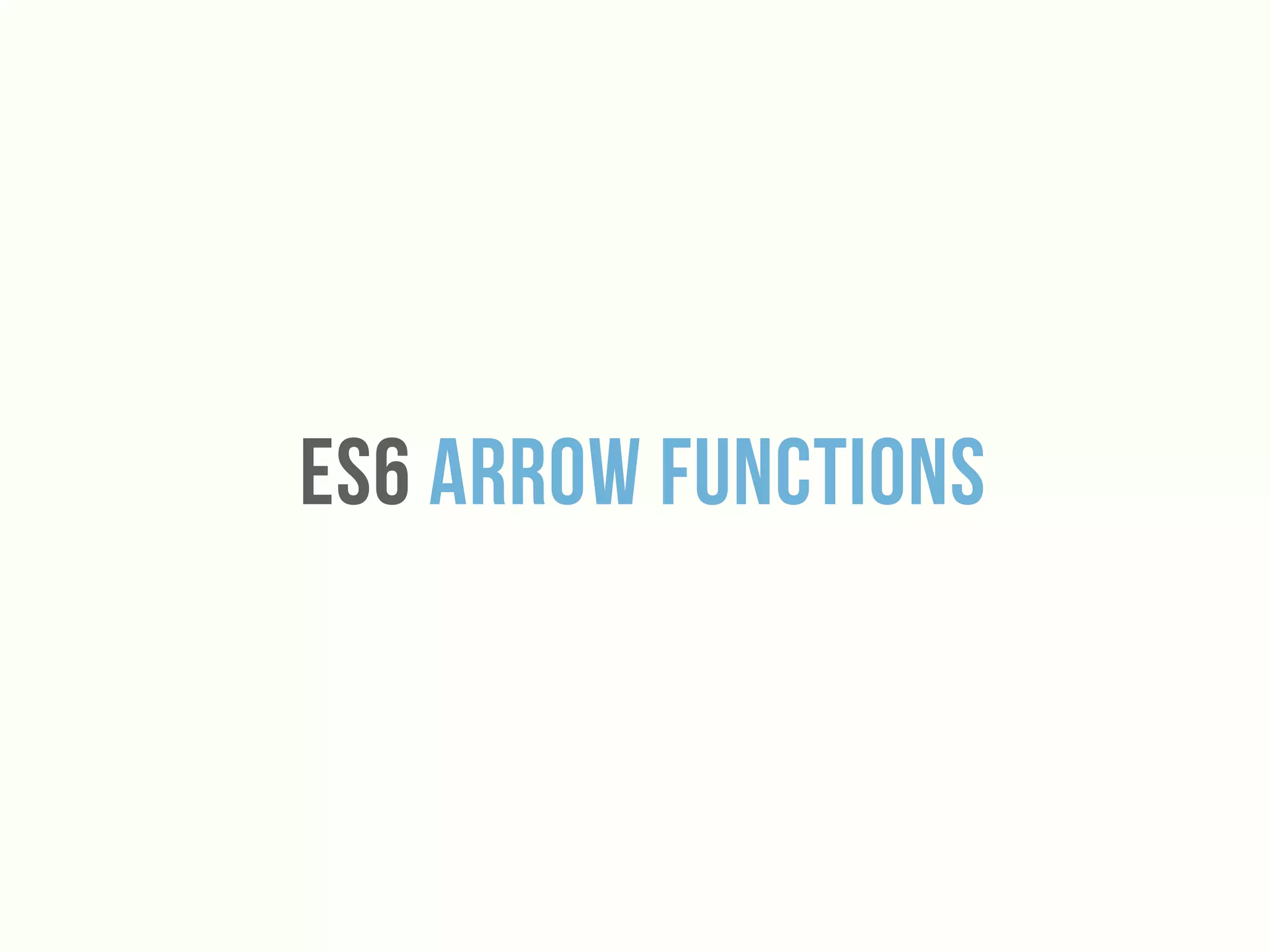

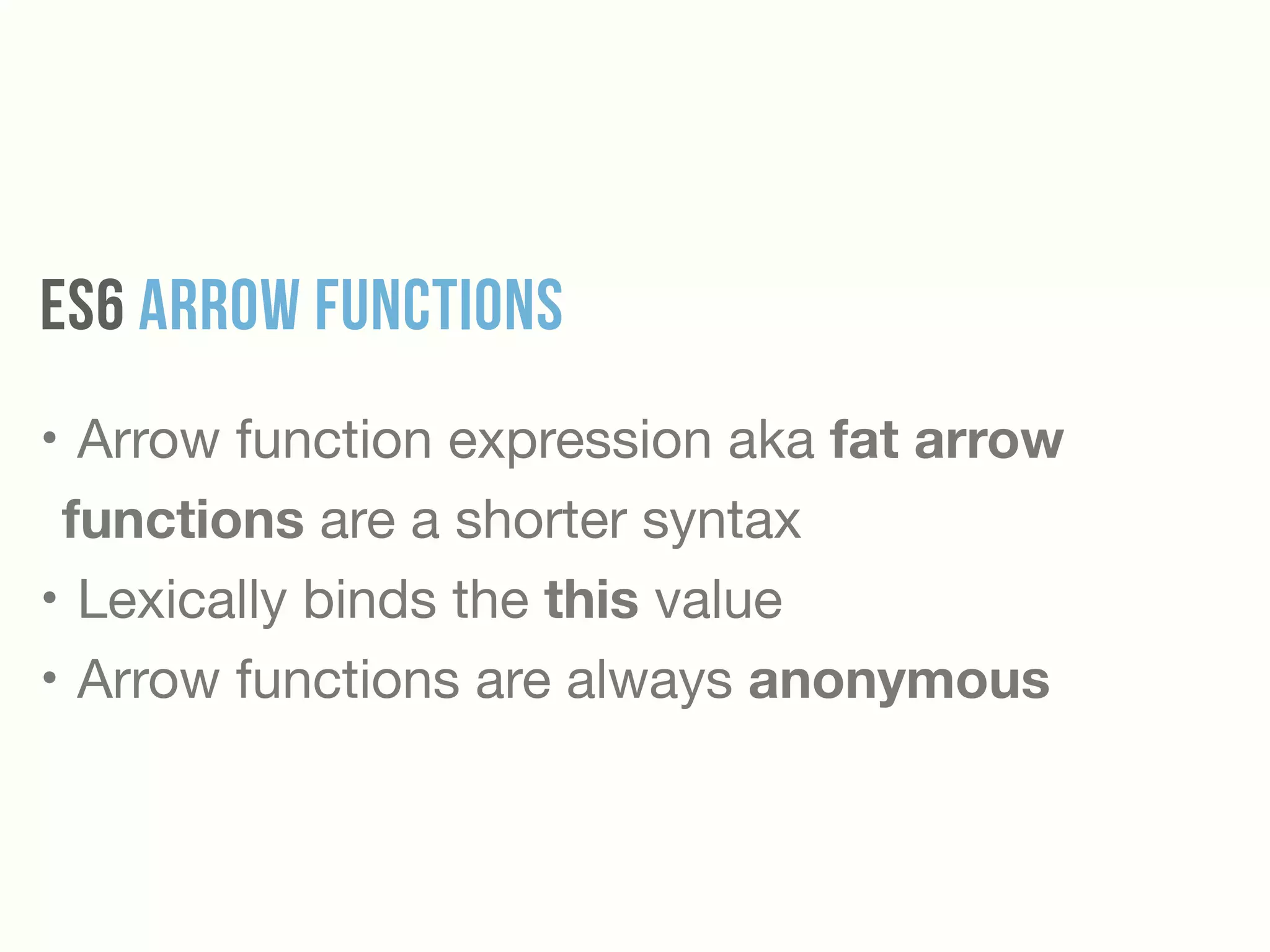
![var numbers = [1,2,3,4,5];
var timesTwo = numbers.map(function (number) {
return number * 2;
});
console.log(timesTwo); // [2, 4, 6, 8, 10]](https://image.slidesharecdn.com/ecmascript2015-150715234500-lva1-app6891/75/Impress-Your-Friends-with-EcmaScript-2015-38-2048.jpg)
![var numbers = [1,2,3,4,5];
var timesTwo = numbers.map((number) => number * 2);
console.log(timesTwo); // [2, 4, 6, 8, 10]](https://image.slidesharecdn.com/ecmascript2015-150715234500-lva1-app6891/75/Impress-Your-Friends-with-EcmaScript-2015-39-2048.jpg)
![var numbers = [1,2,3,4,5];
var timesTwo = numbers.map(number => number * 2);
console.log(timesTwo); // [2, 4, 6, 8, 10]](https://image.slidesharecdn.com/ecmascript2015-150715234500-lva1-app6891/75/Impress-Your-Friends-with-EcmaScript-2015-40-2048.jpg)
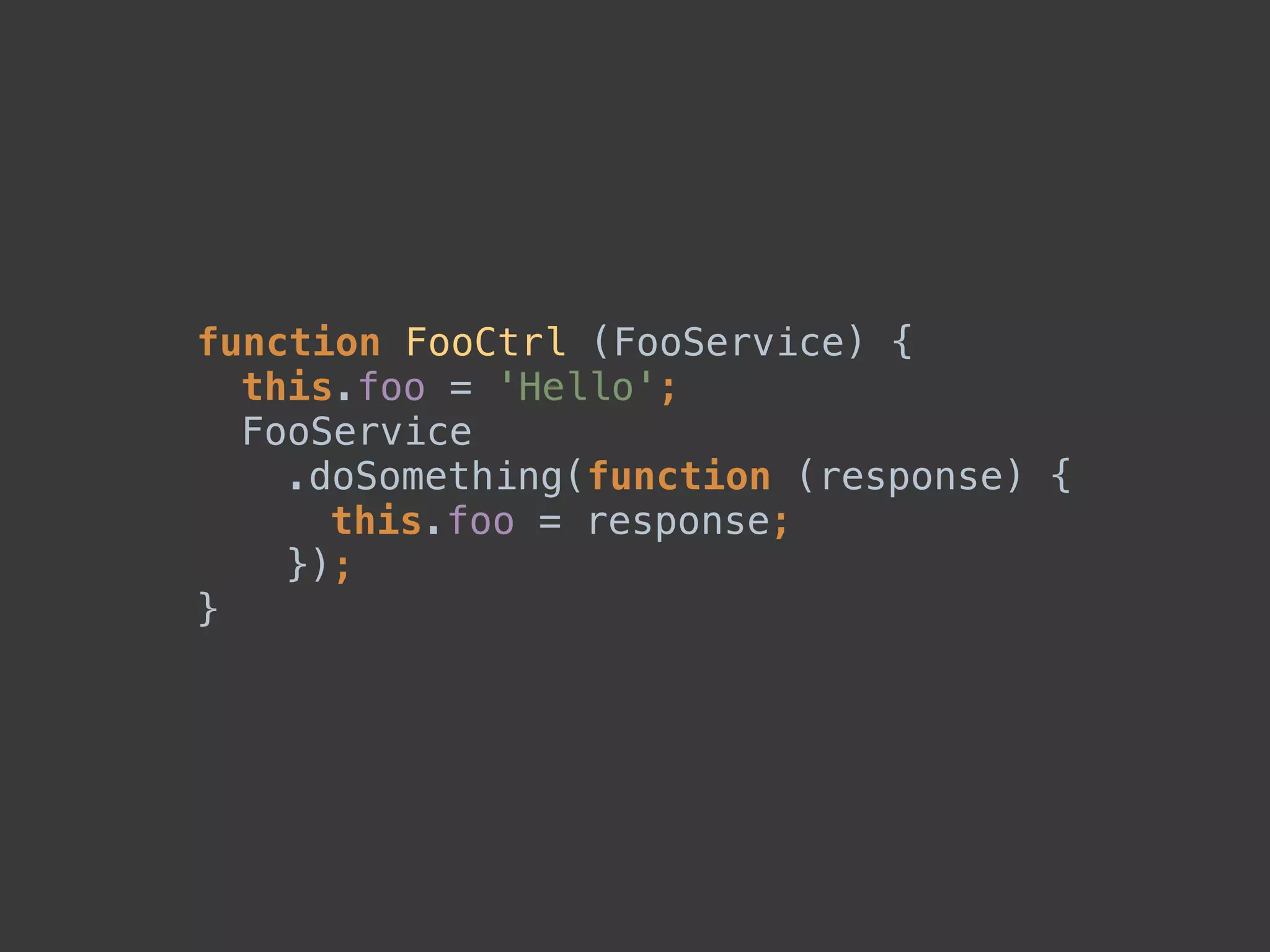
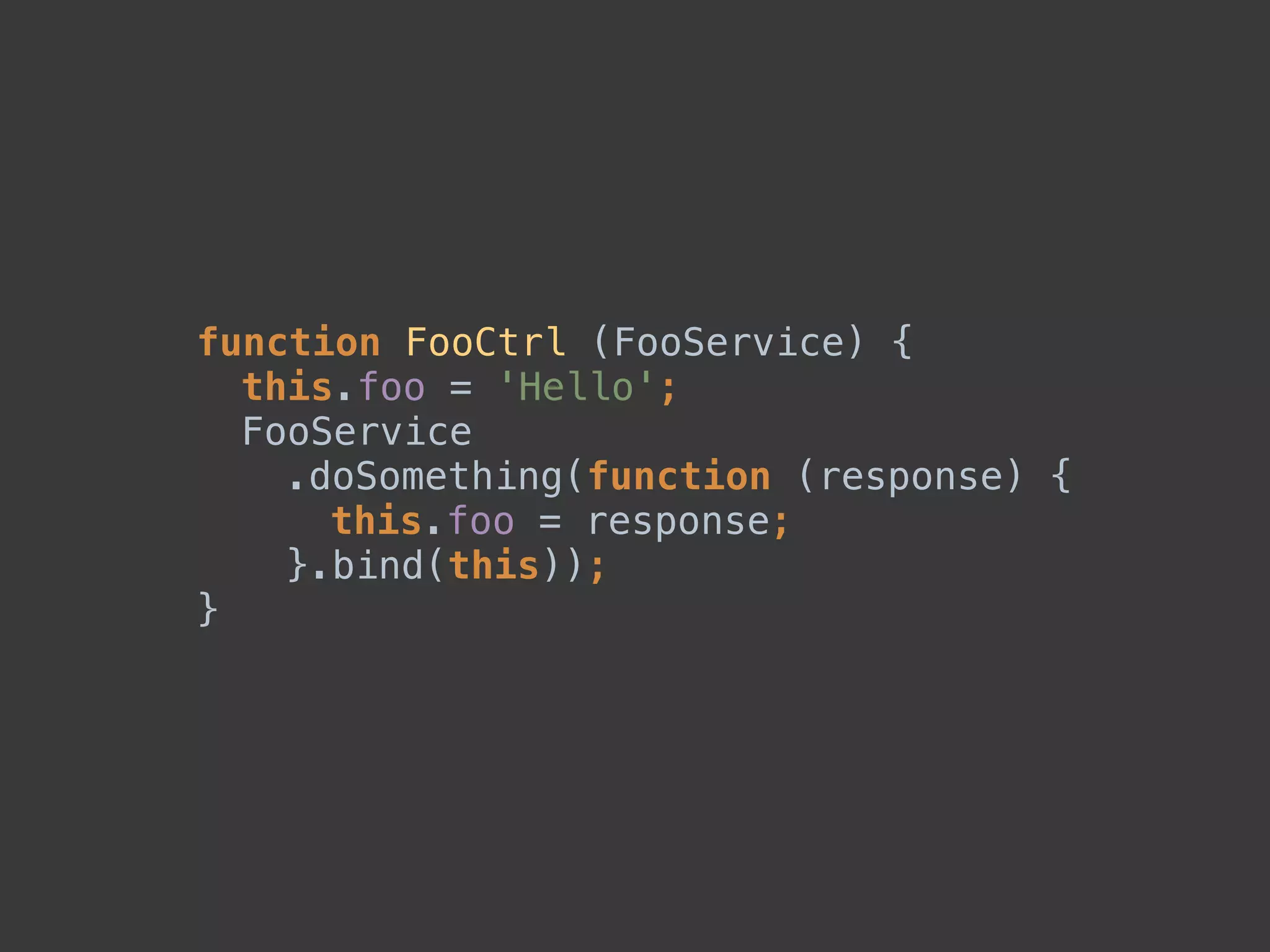
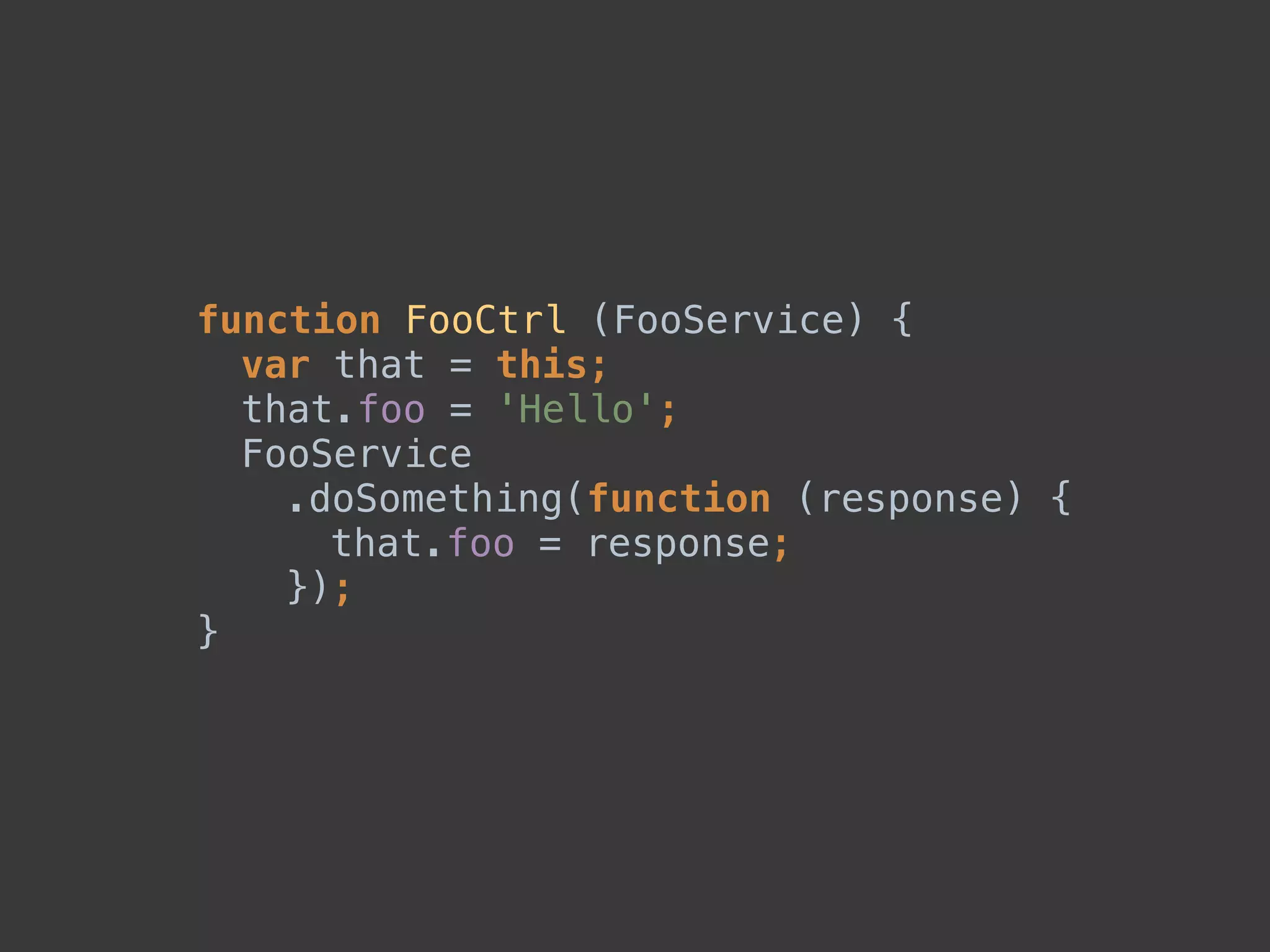
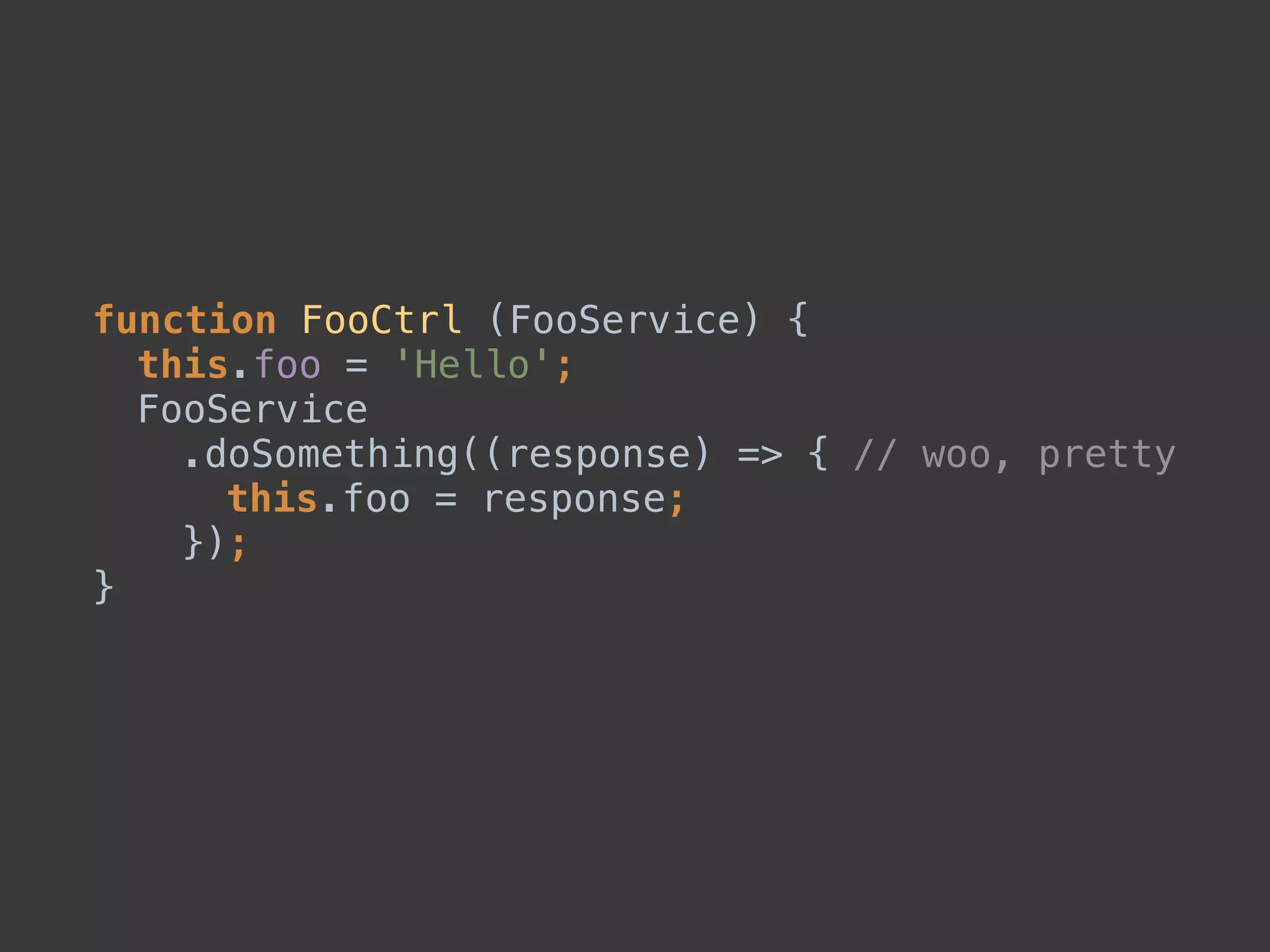
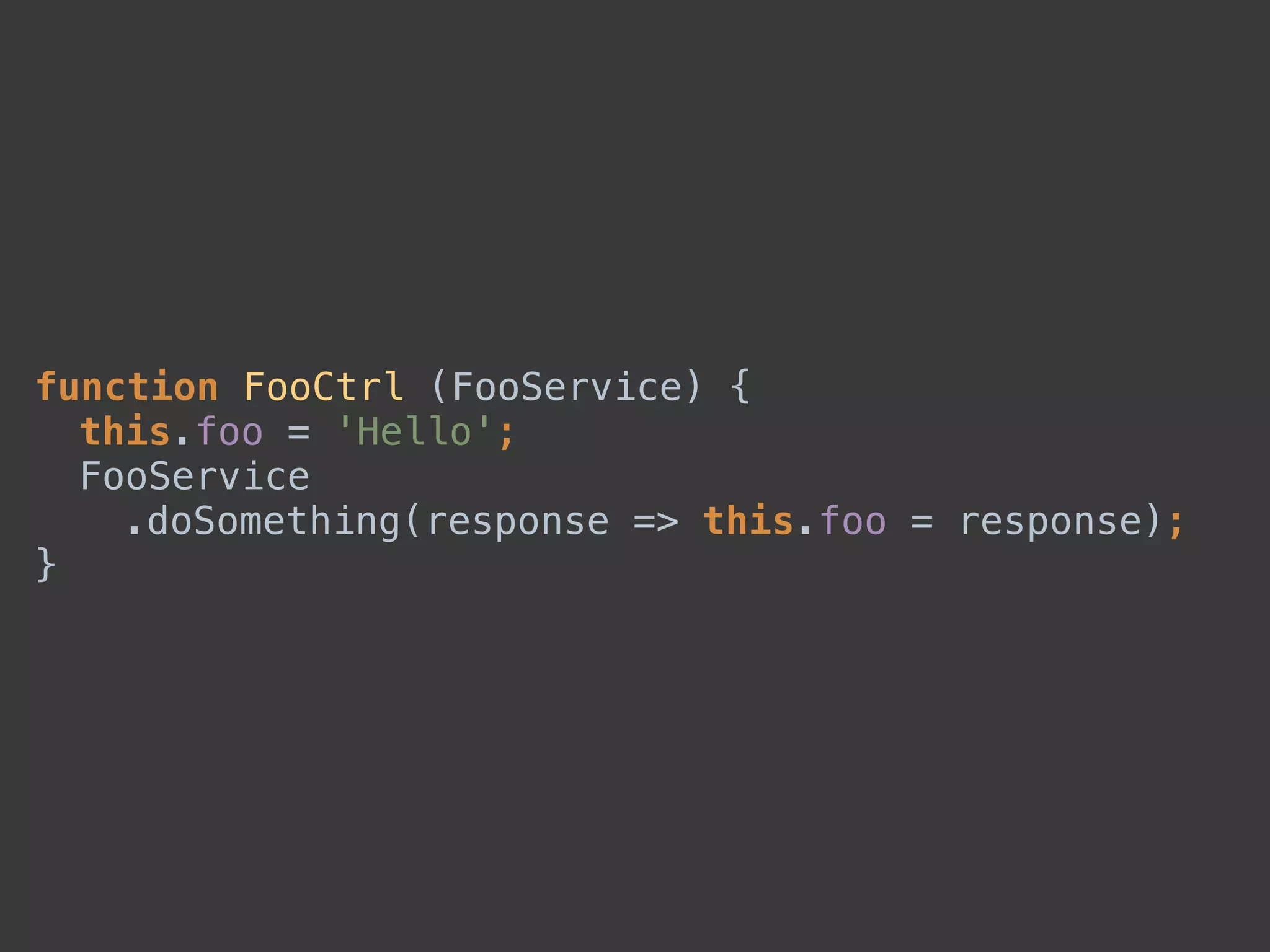
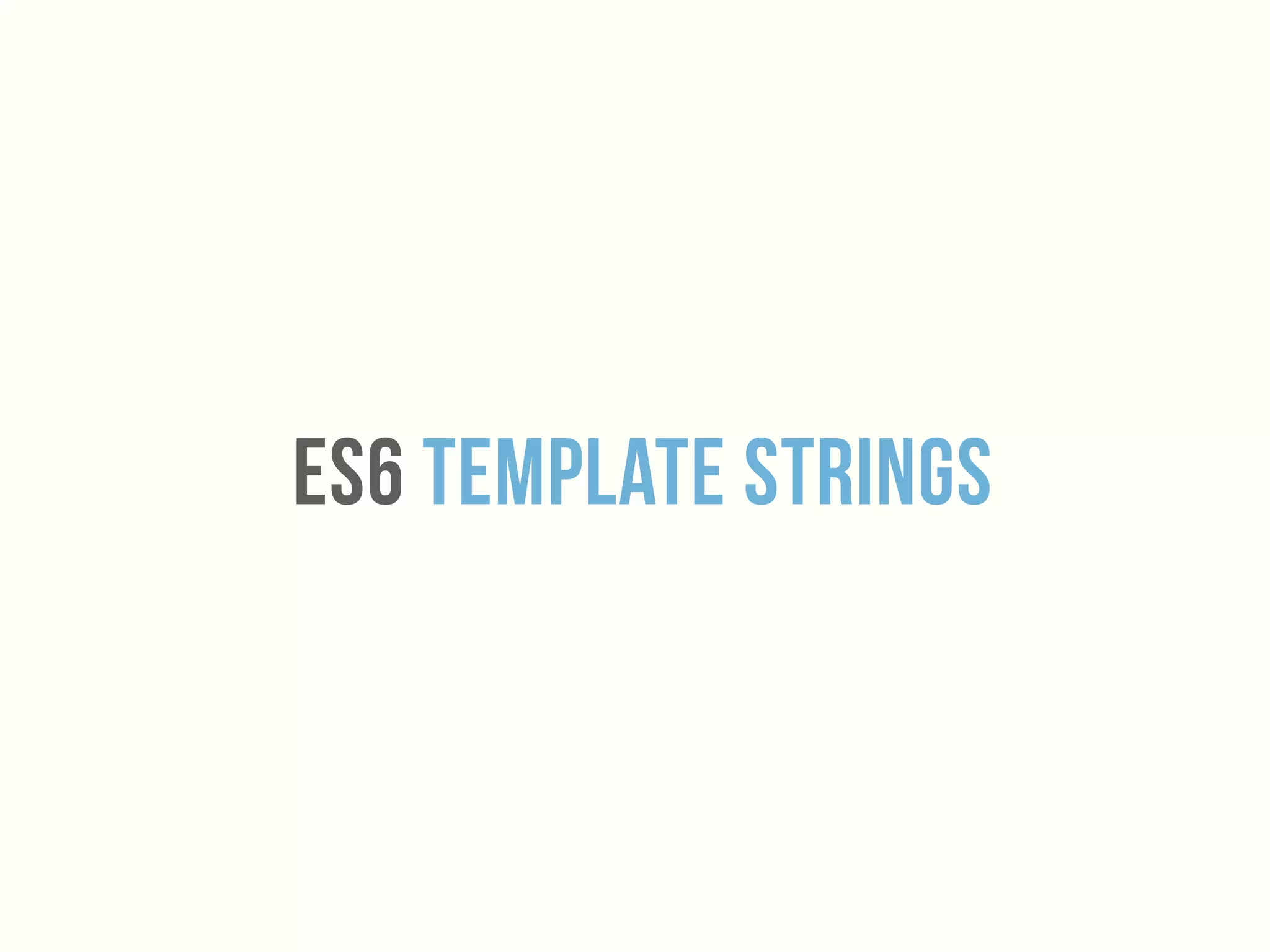
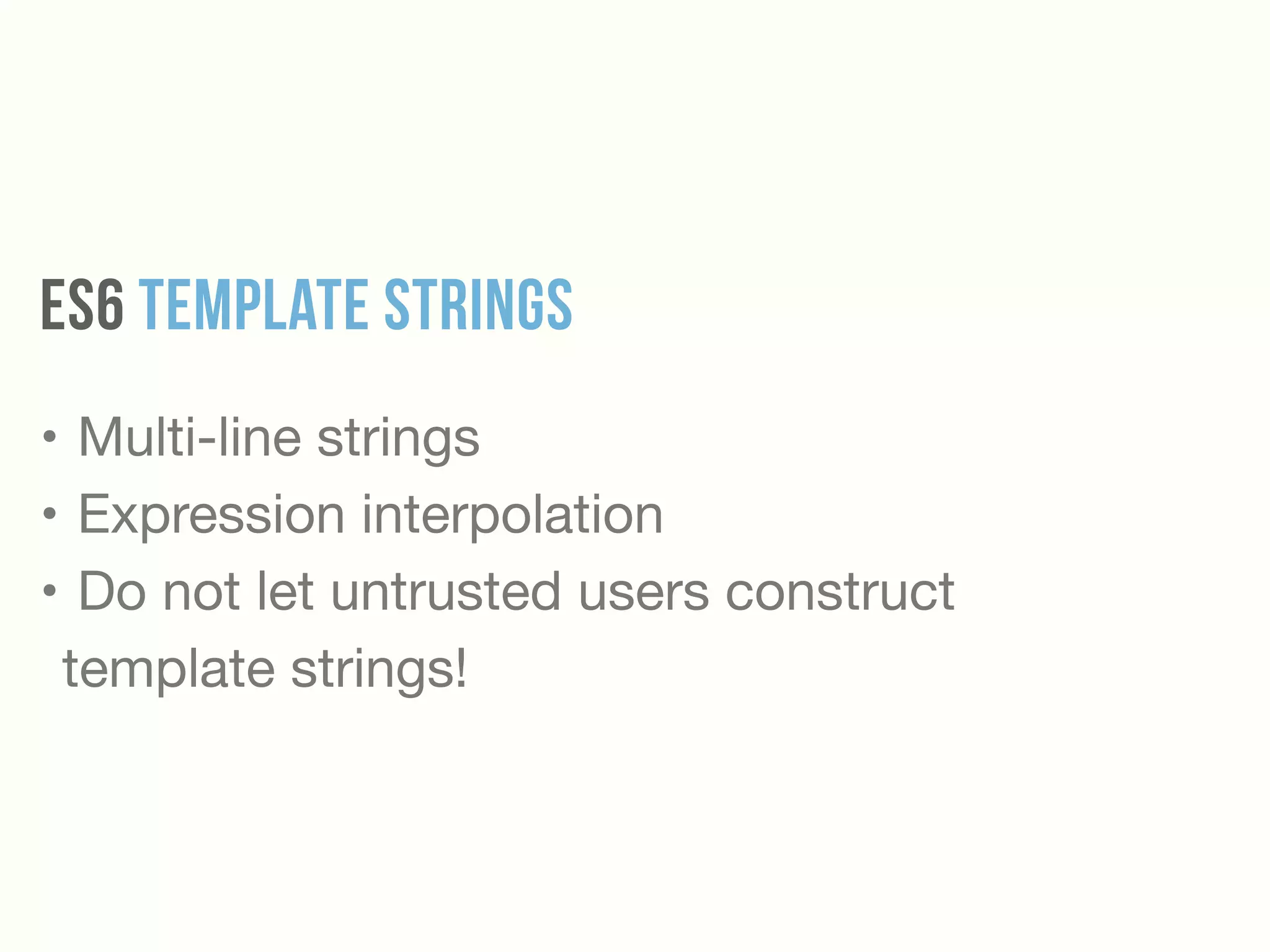
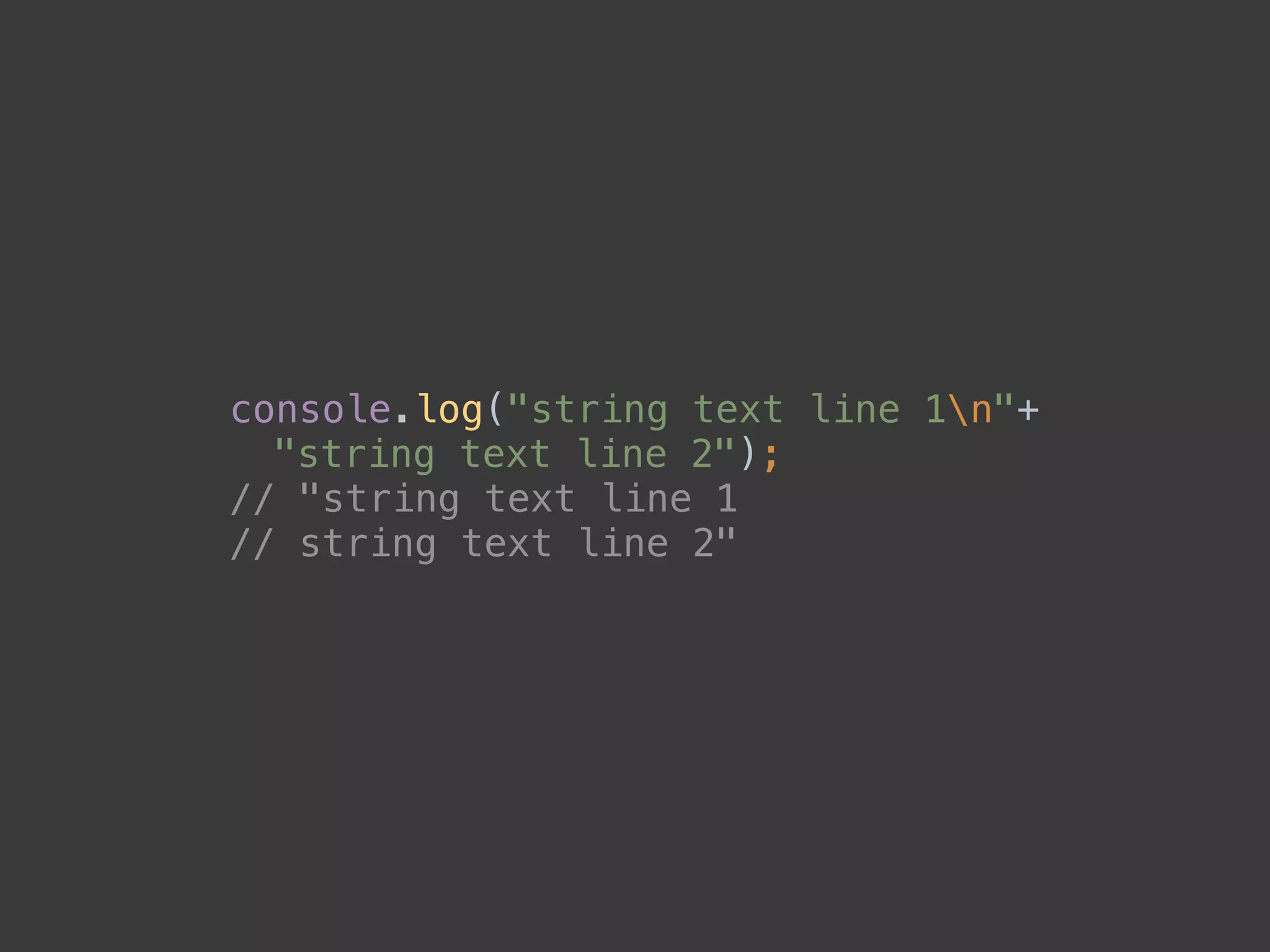
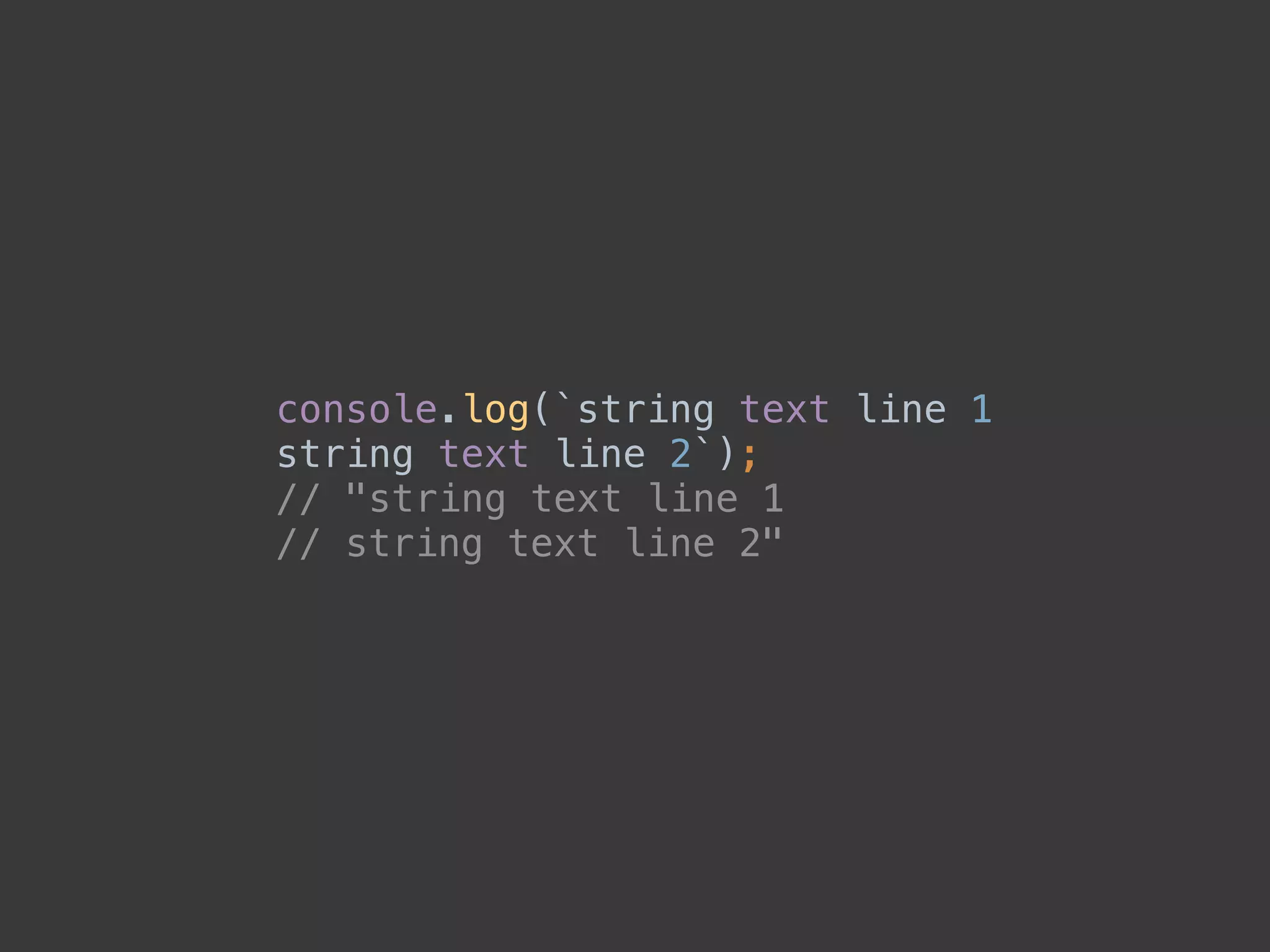
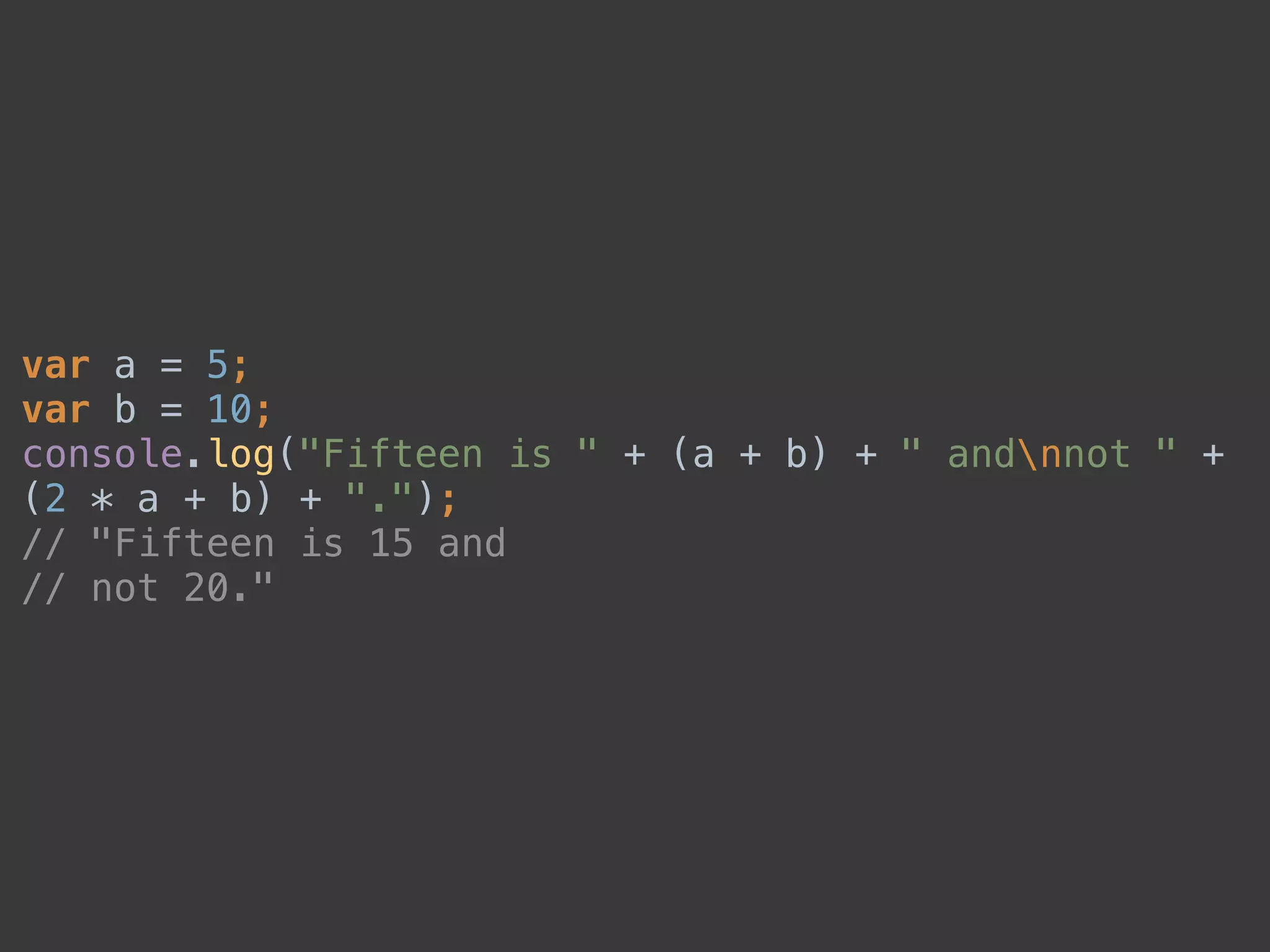
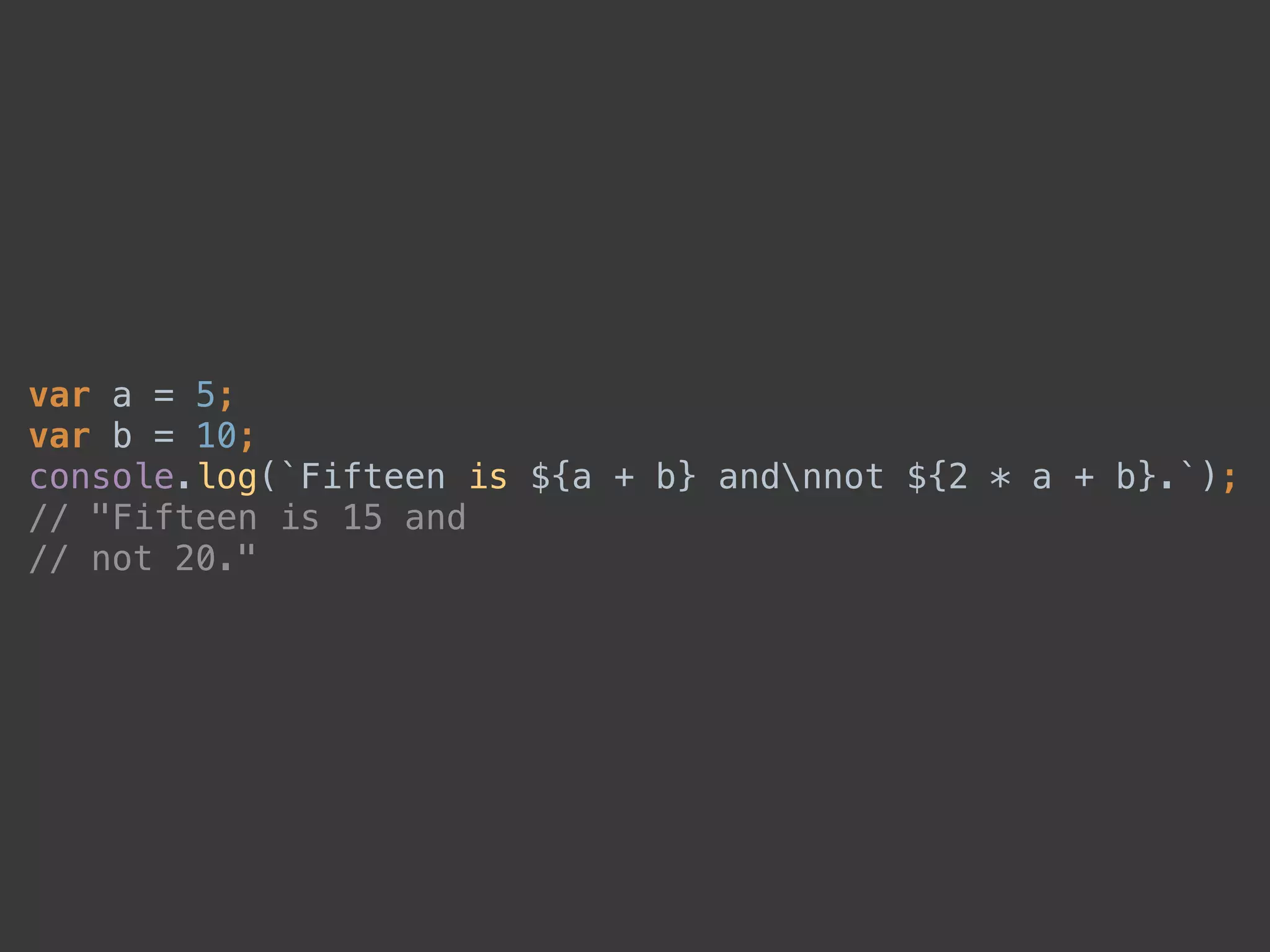
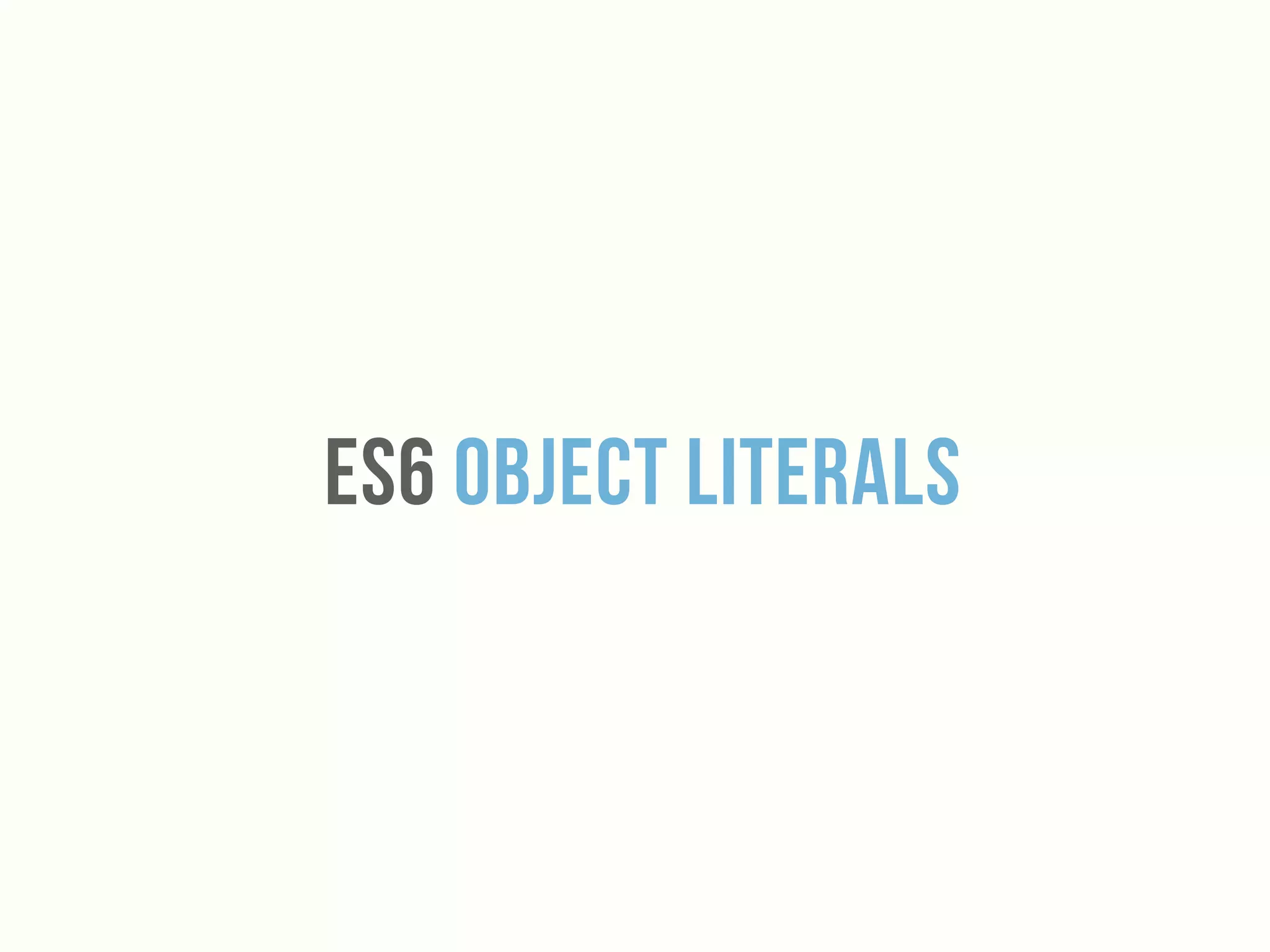
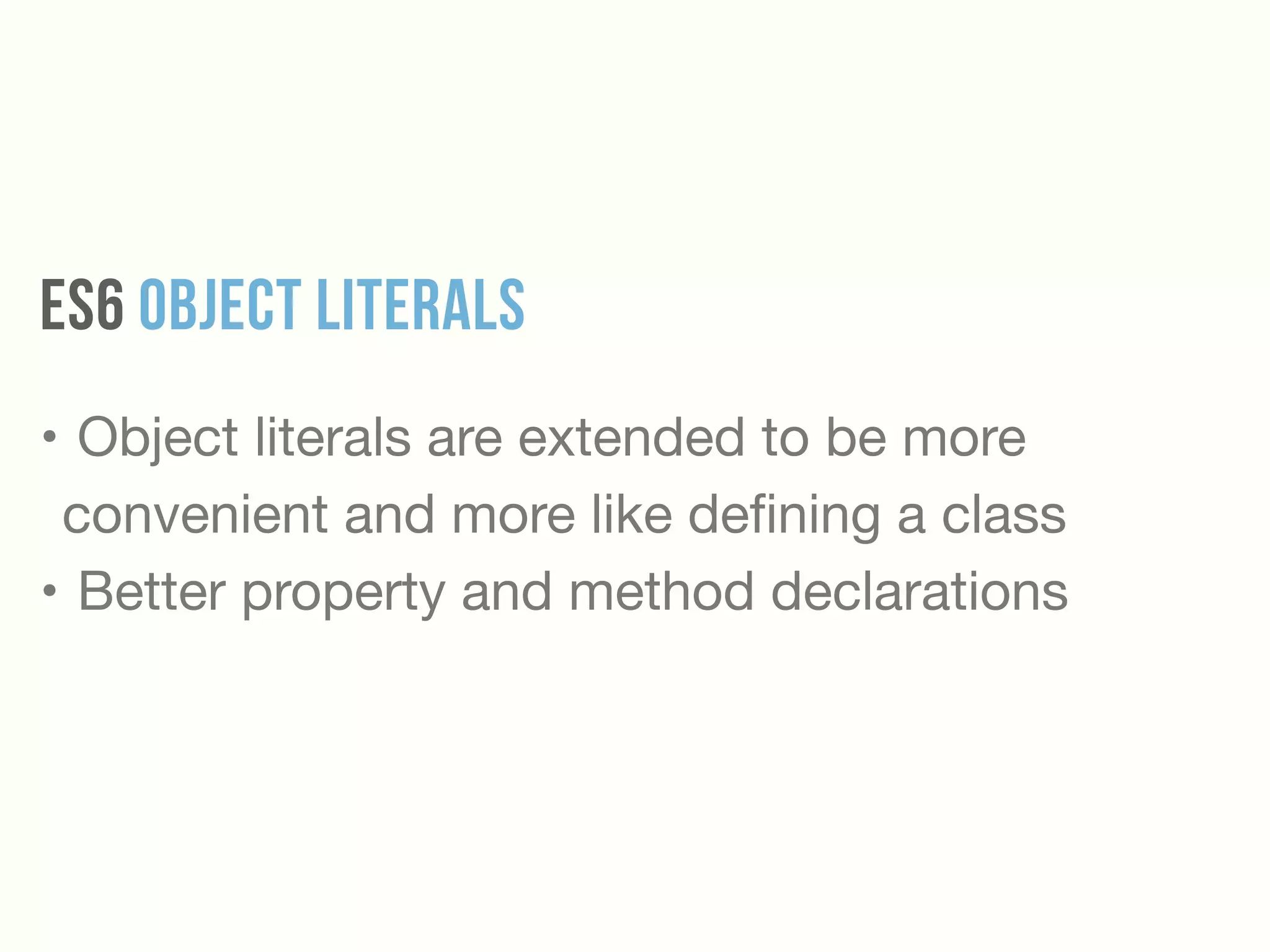
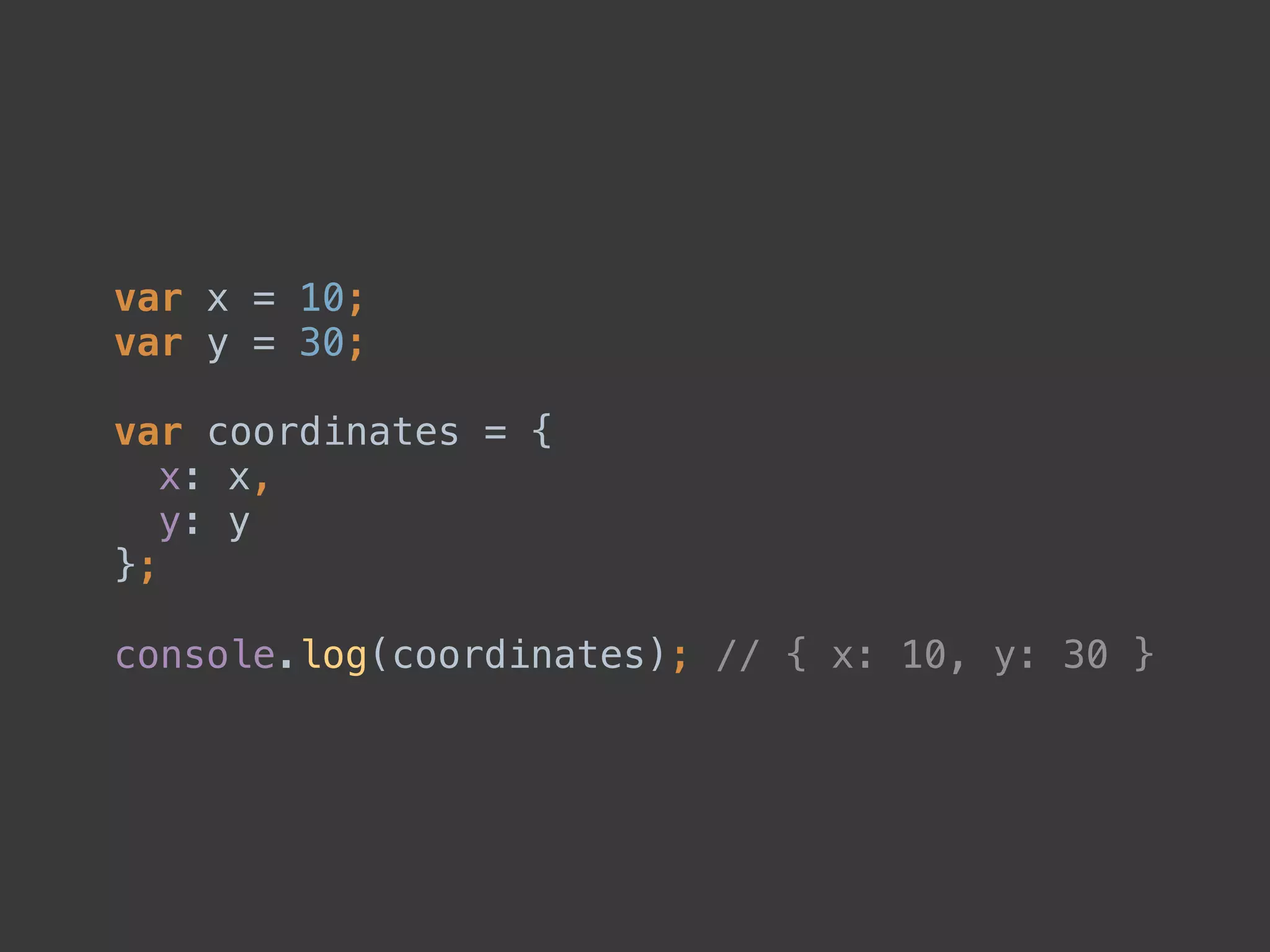
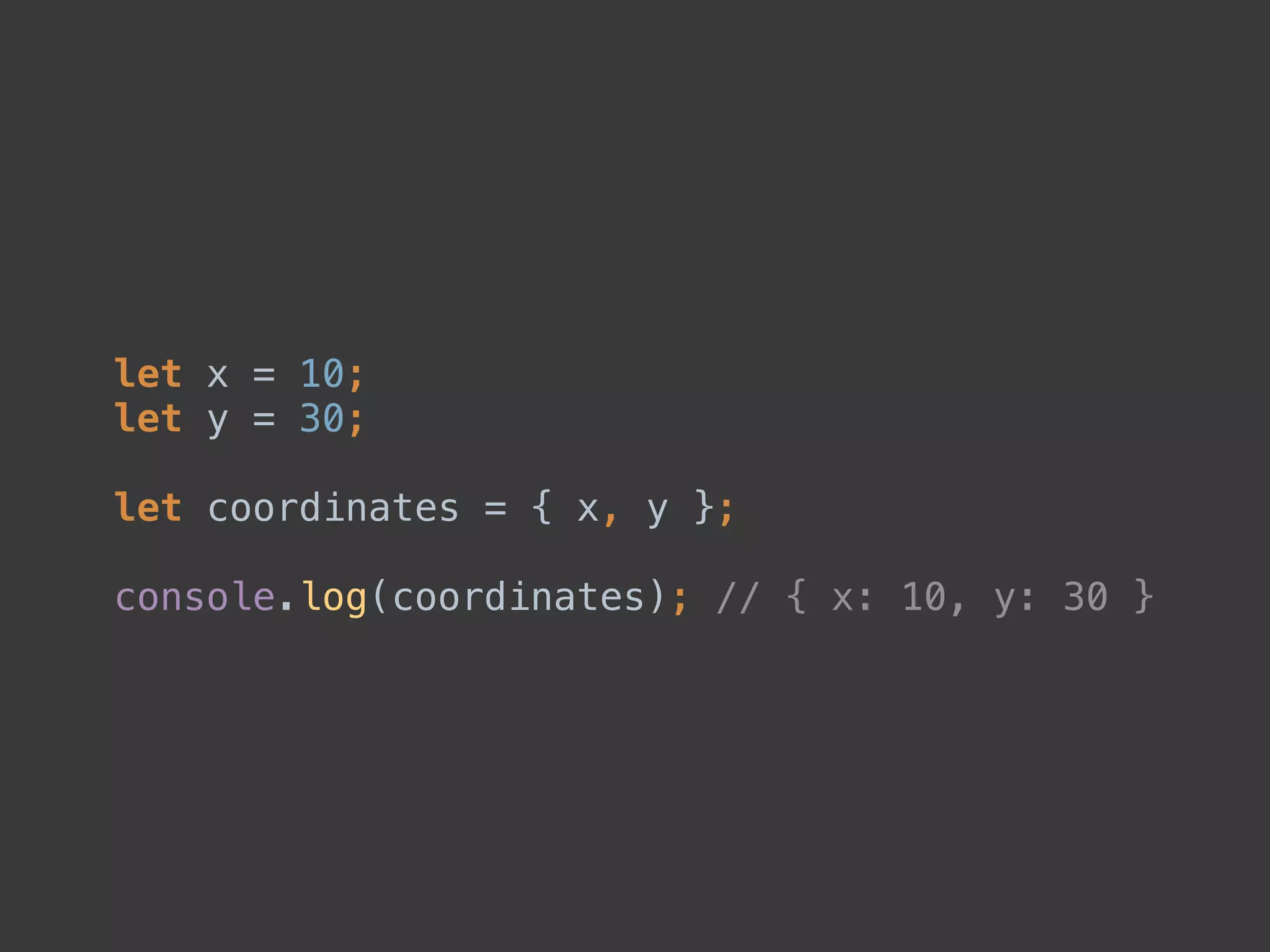
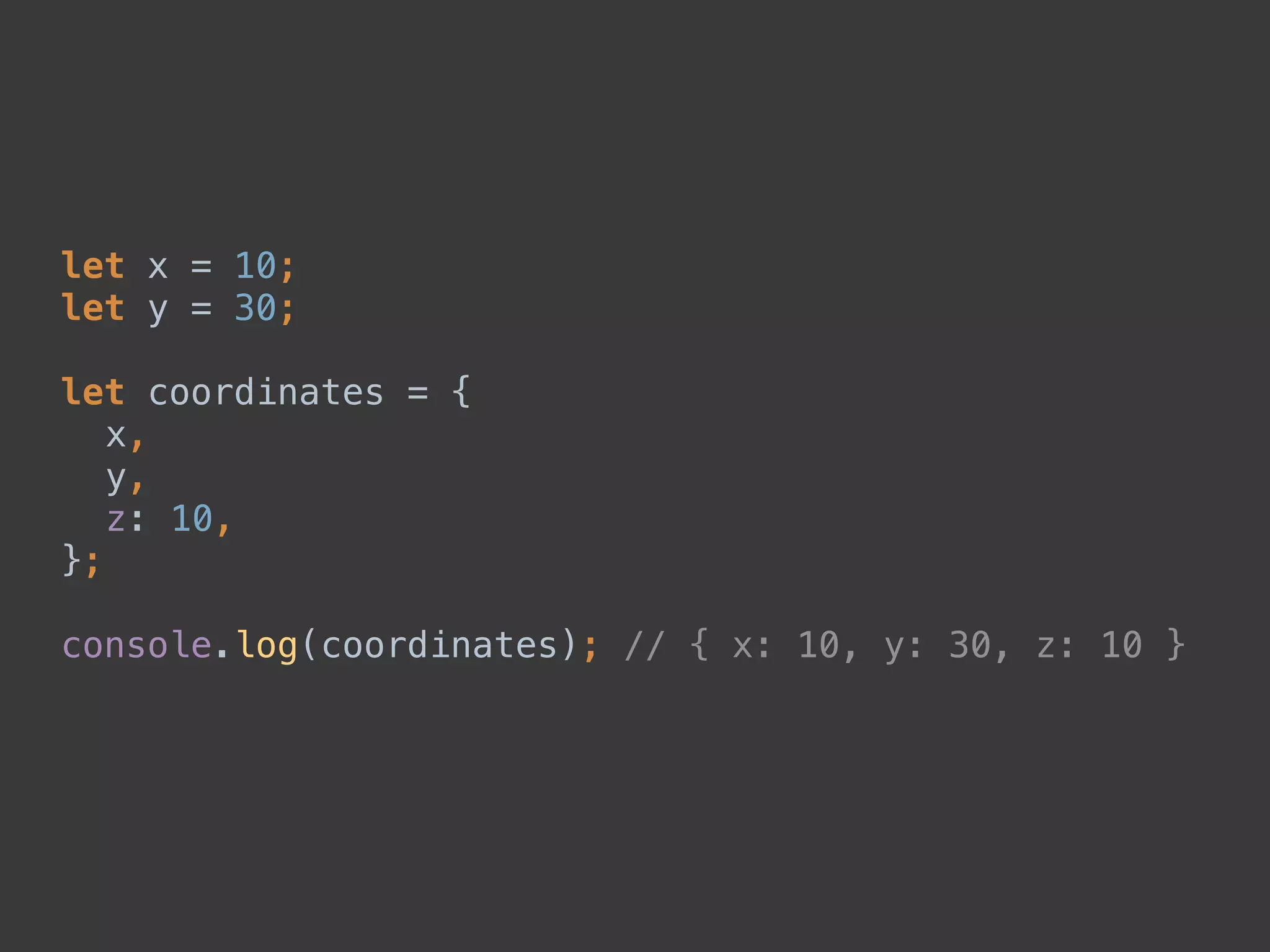
![var cart = {
_items: [],
addItem: function(item) {
this._items.push(item);
return this;
},
toString: function() {
return this._items.join(', ');
}
}
cart.addItem('apple')
.addItem('orange')
.addItem('banana');
console.log(cart.toString()); // apple, orange, banana](https://image.slidesharecdn.com/ecmascript2015-150715234500-lva1-app6891/75/Impress-Your-Friends-with-EcmaScript-2015-57-2048.jpg)
![var cart = {
_items: [],
addItem(item) {
this._items.push(item);
return this;
},
toString() {
return this._items.join(', ');
}
}
cart.addItem('apple')
.addItem('orange')
.addItem('banana');
console.log(cart.toString()); // apple, orange, banana](https://image.slidesharecdn.com/ecmascript2015-150715234500-lva1-app6891/75/Impress-Your-Friends-with-EcmaScript-2015-58-2048.jpg)
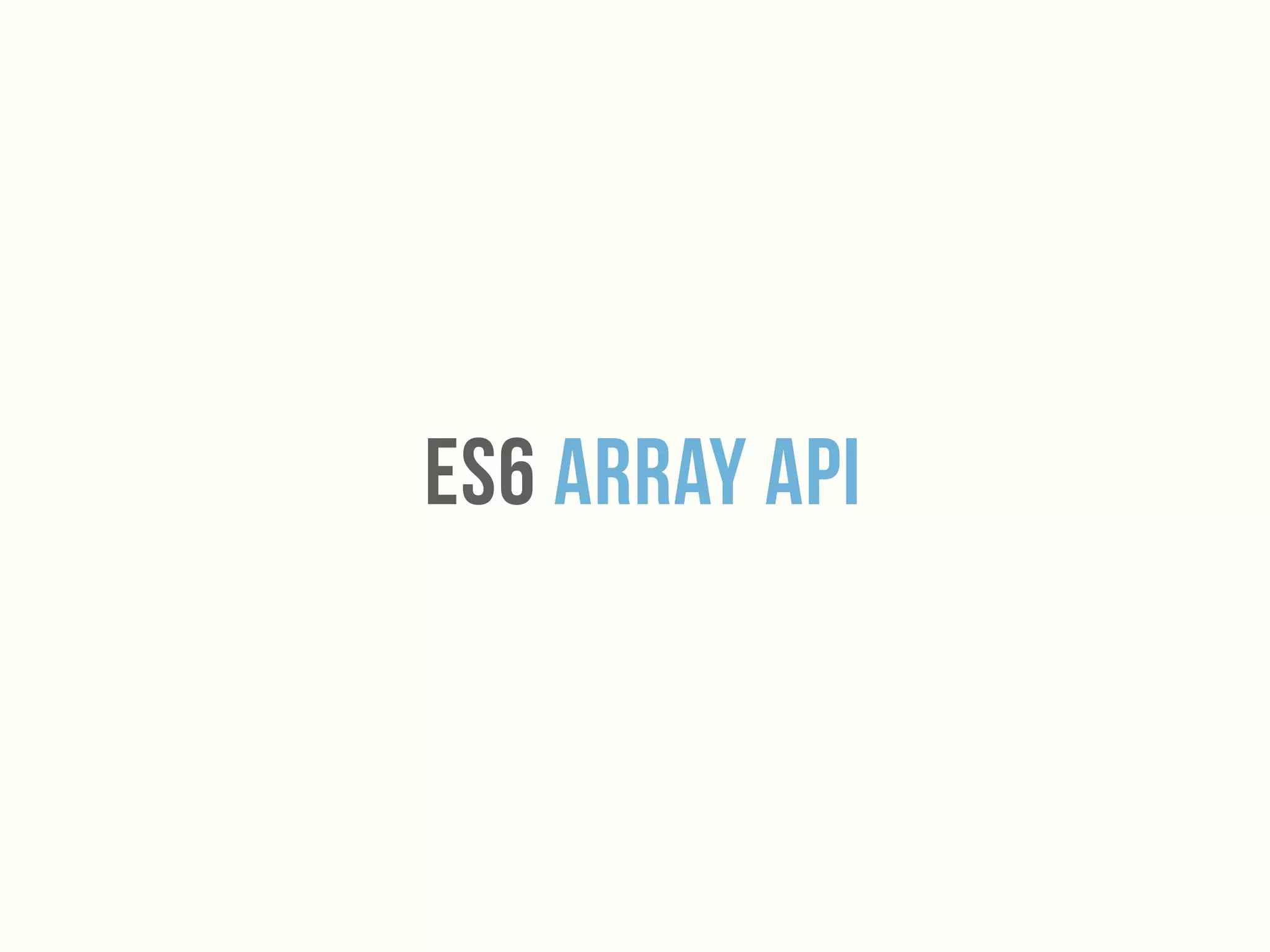
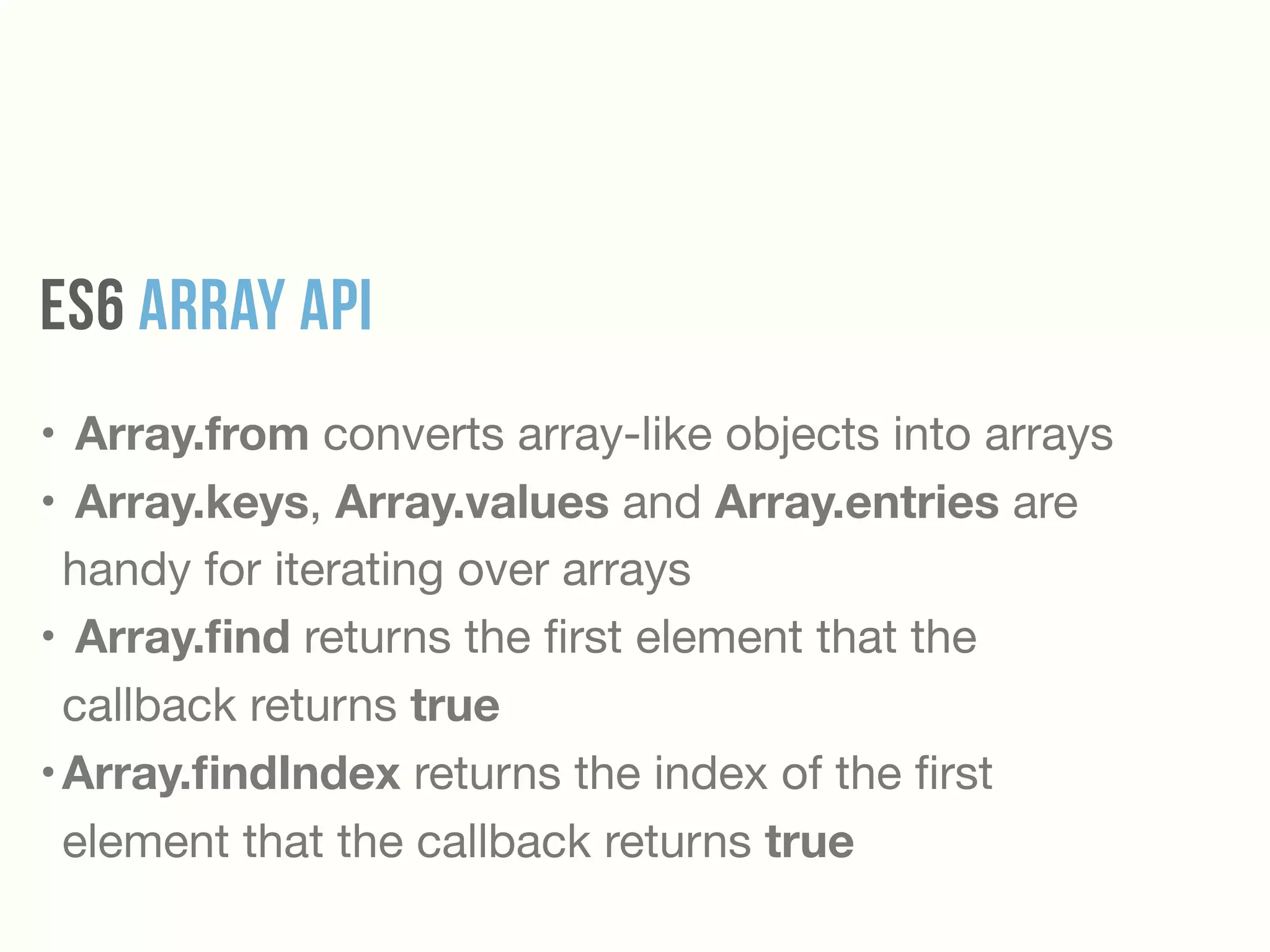
![// Array-like object (arguments) to Array
function f() {
return Array.from(arguments);
}
f(1, 2, 3);
// [1, 2, 3]
// Any iterable object...
// Set
var s = new Set(["foo", window]);
Array.from(s);
// ["foo", window]
// Map
var m = new Map([[1, 2], [2, 4], [4, 8]]);
Array.from(m);
// [[1, 2], [2, 4], [4, 8]]
// String
Array.from("foo");
// ["f", "o", "o"]](https://image.slidesharecdn.com/ecmascript2015-150715234500-lva1-app6891/75/Impress-Your-Friends-with-EcmaScript-2015-61-2048.jpg)
![var arr = ["a", "b", "c"];
var iterator = arr.keys();
console.log(iterator.next()); // { value: 0, done: false }
console.log(iterator.next()); // { value: 1, done: false }
console.log(iterator.next()); // { value: 2, done: false }
console.log(iterator.next()); // { value: undefined, done: true }](https://image.slidesharecdn.com/ecmascript2015-150715234500-lva1-app6891/75/Impress-Your-Friends-with-EcmaScript-2015-62-2048.jpg)
![var arr = ['w', 'y', 'k', 'o', 'p'];
var eArr = arr.values();
console.log(eArr.next().value); // w
console.log(eArr.next().value); // y
console.log(eArr.next().value); // k
console.log(eArr.next().value); // o
console.log(eArr.next().value); // p](https://image.slidesharecdn.com/ecmascript2015-150715234500-lva1-app6891/75/Impress-Your-Friends-with-EcmaScript-2015-63-2048.jpg)
![var arr = ['a', 'b', 'c'];
var eArr = arr.entries();
console.log(eArr.next().value); // [0, 'a']
console.log(eArr.next().value); // [1, 'b']
console.log(eArr.next().value); // [2, 'c']](https://image.slidesharecdn.com/ecmascript2015-150715234500-lva1-app6891/75/Impress-Your-Friends-with-EcmaScript-2015-64-2048.jpg)
![function isPrime(element, index, array) {
var start = 2;
while (start <= Math.sqrt(element)) {
if (element % start++ < 1) {
return false;
}
}
return element > 1;
}
console.log([4, 6, 8, 12].find(isPrime)); // undefined, not found
console.log([4, 5, 8, 12].find(isPrime)); // 5](https://image.slidesharecdn.com/ecmascript2015-150715234500-lva1-app6891/75/Impress-Your-Friends-with-EcmaScript-2015-65-2048.jpg)
![function isPrime(element, index, array) {
var start = 2;
while (start <= Math.sqrt(element)) {
if (element % start++ < 1) {
return false;
}
}
return element > 1;
}
console.log([4, 6, 8, 12].findIndex(isPrime)); // -1, not found
console.log([4, 6, 7, 12].findIndex(isPrime)); // 2](https://image.slidesharecdn.com/ecmascript2015-150715234500-lva1-app6891/75/Impress-Your-Friends-with-EcmaScript-2015-66-2048.jpg)

